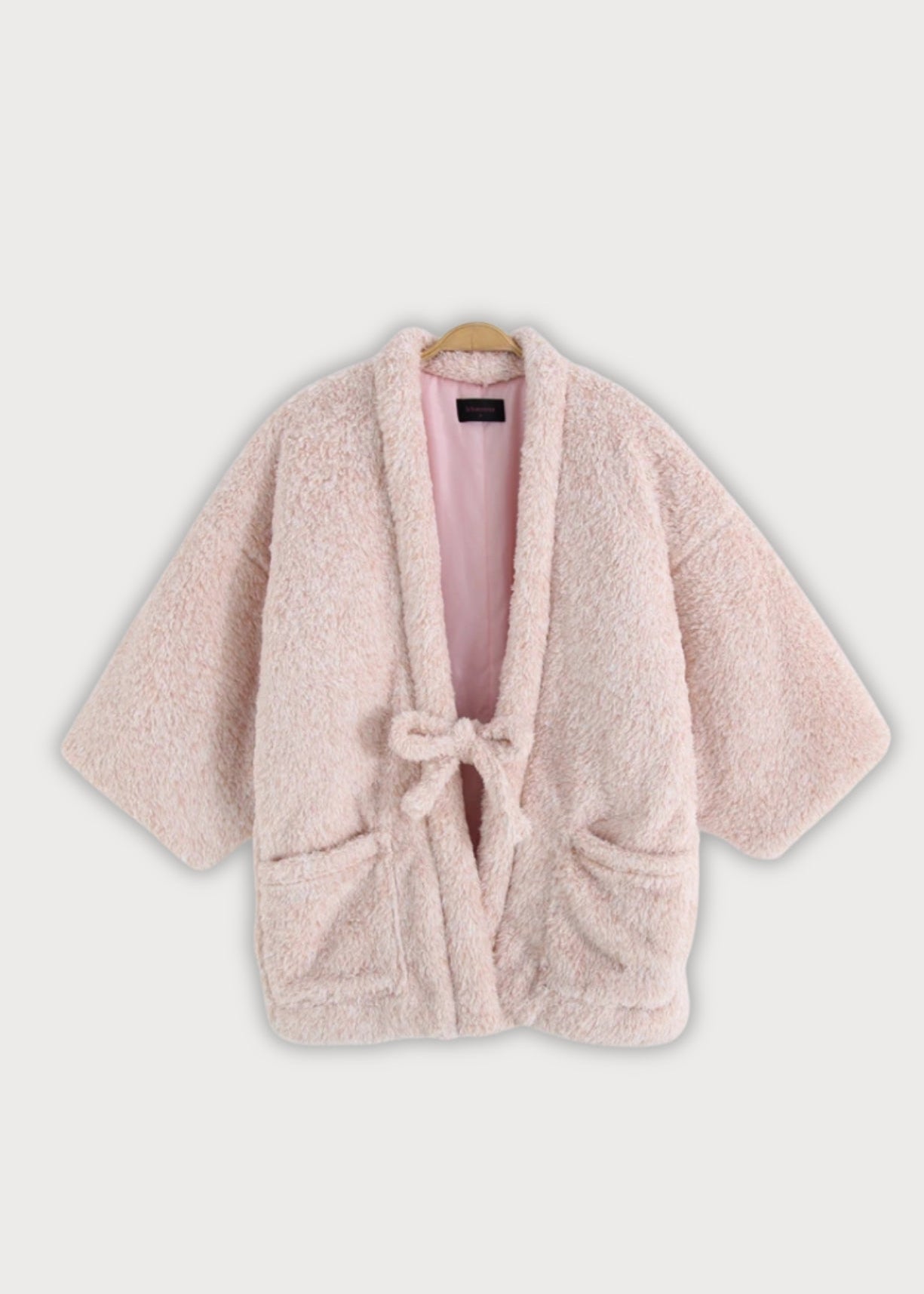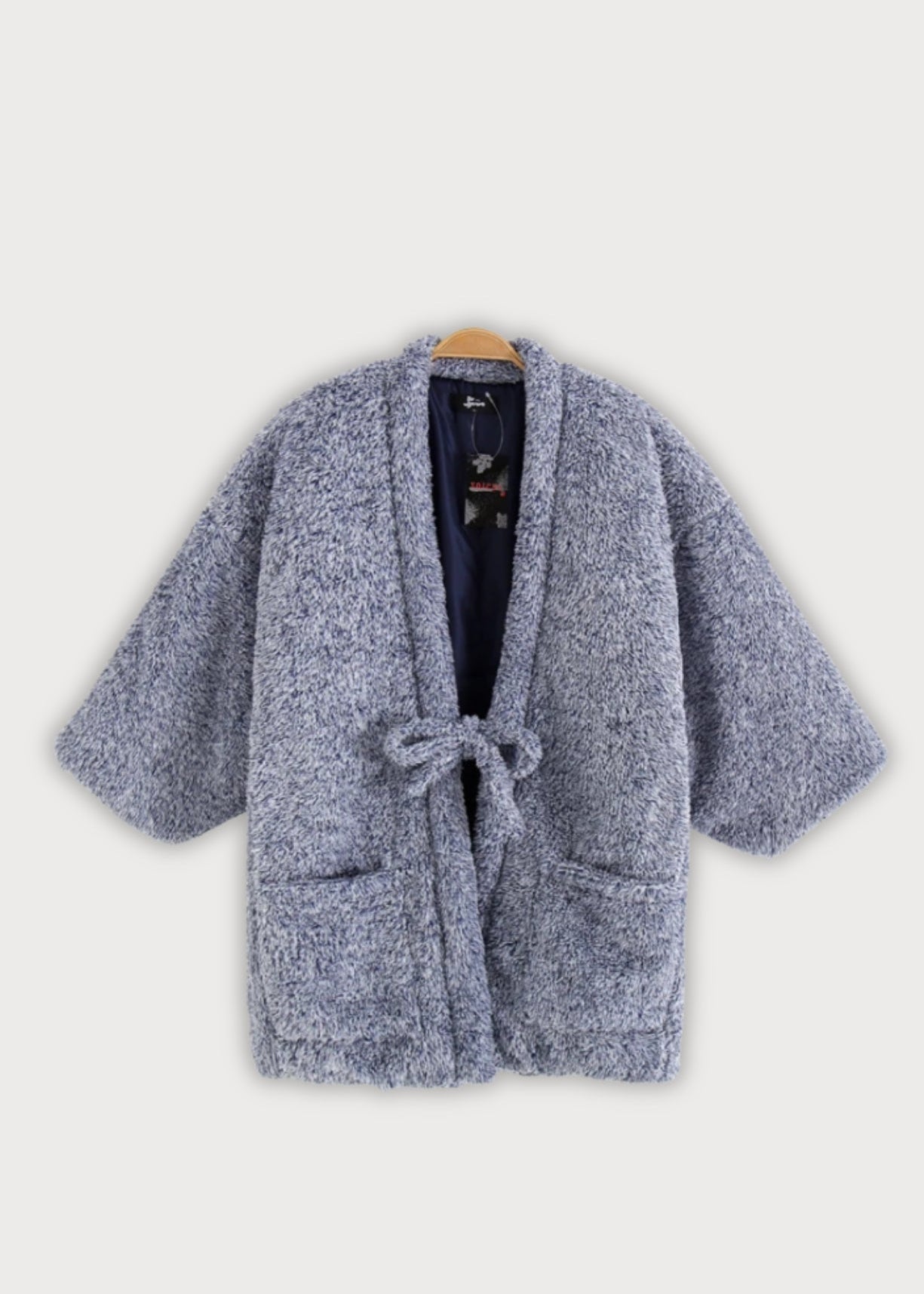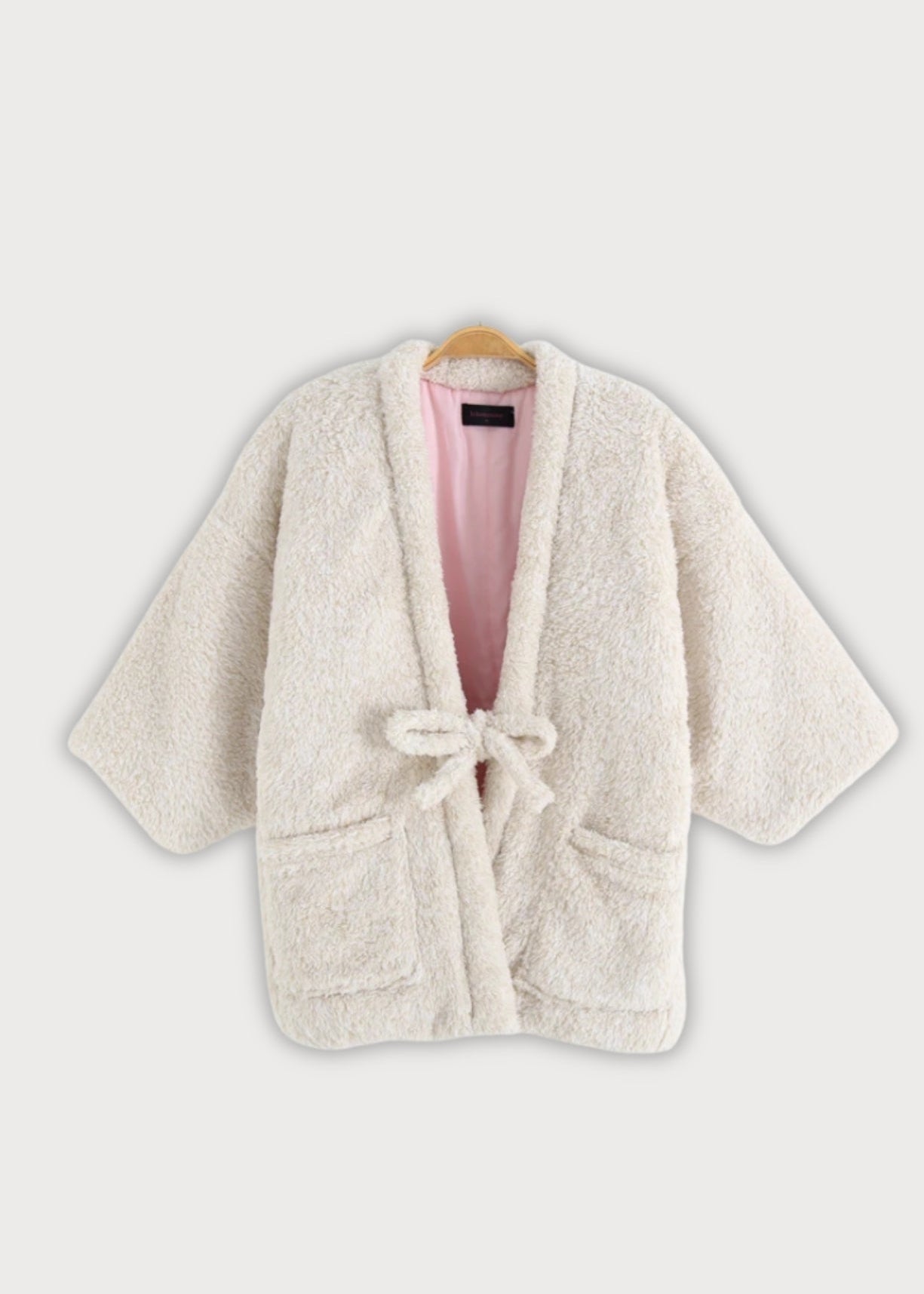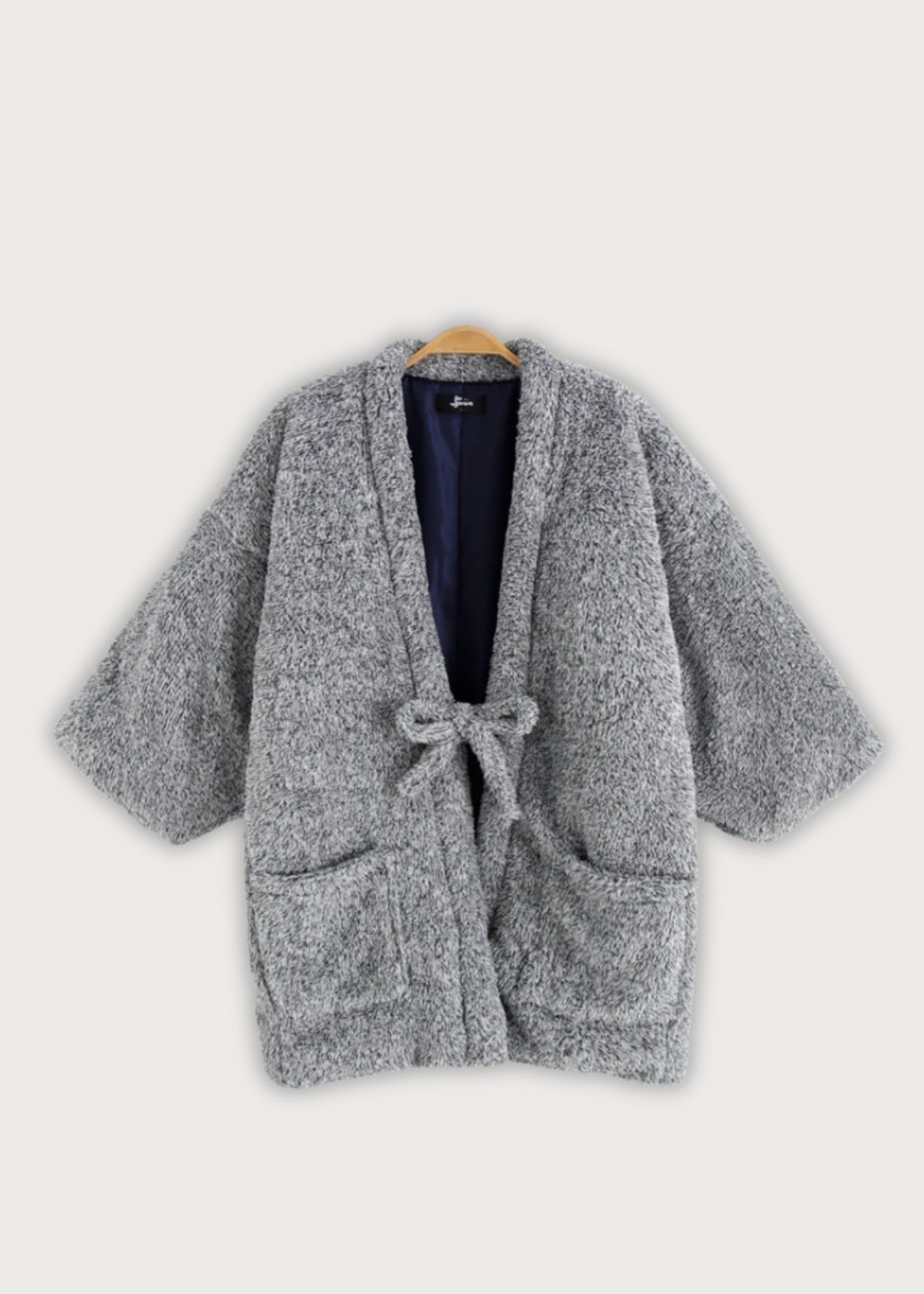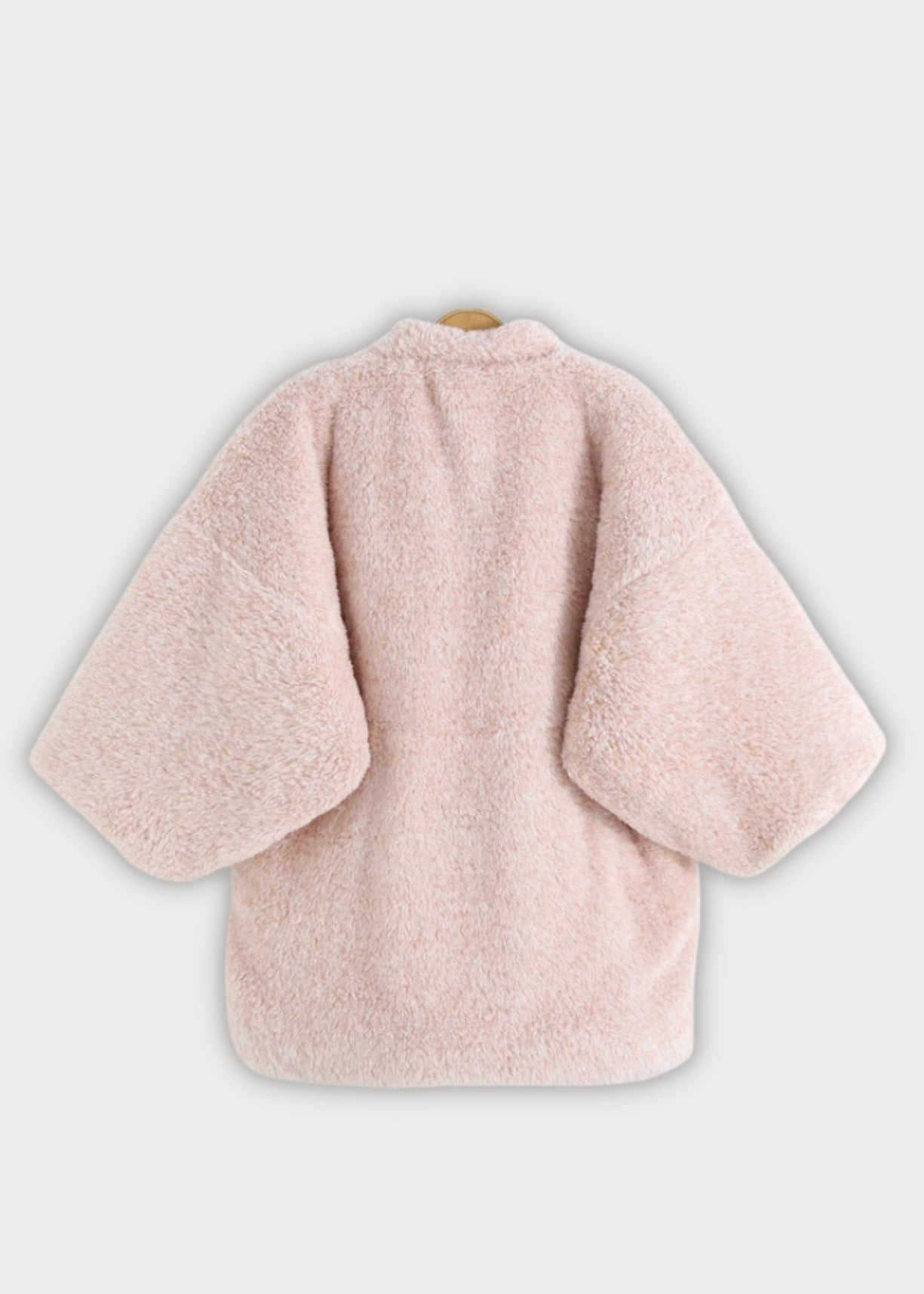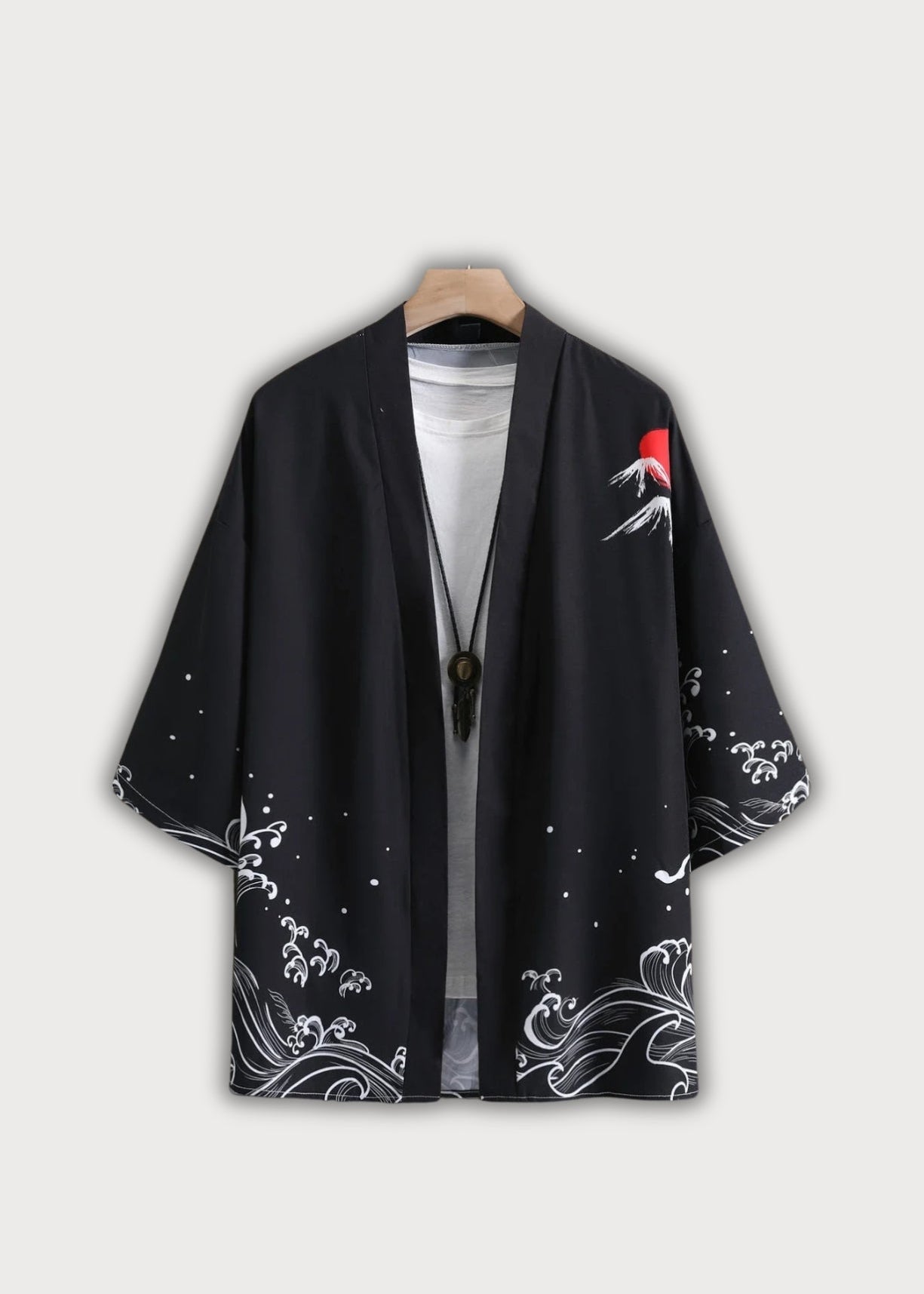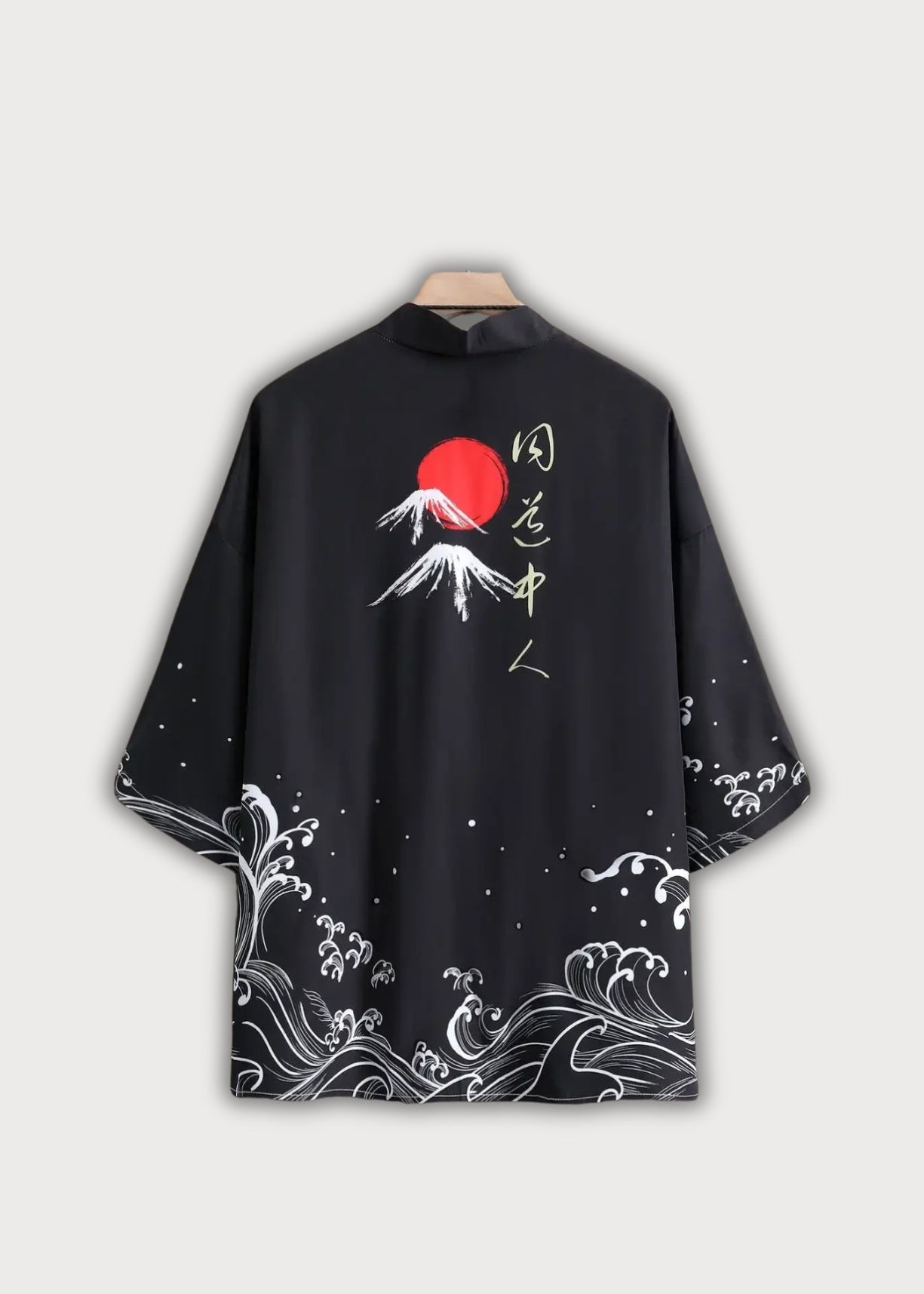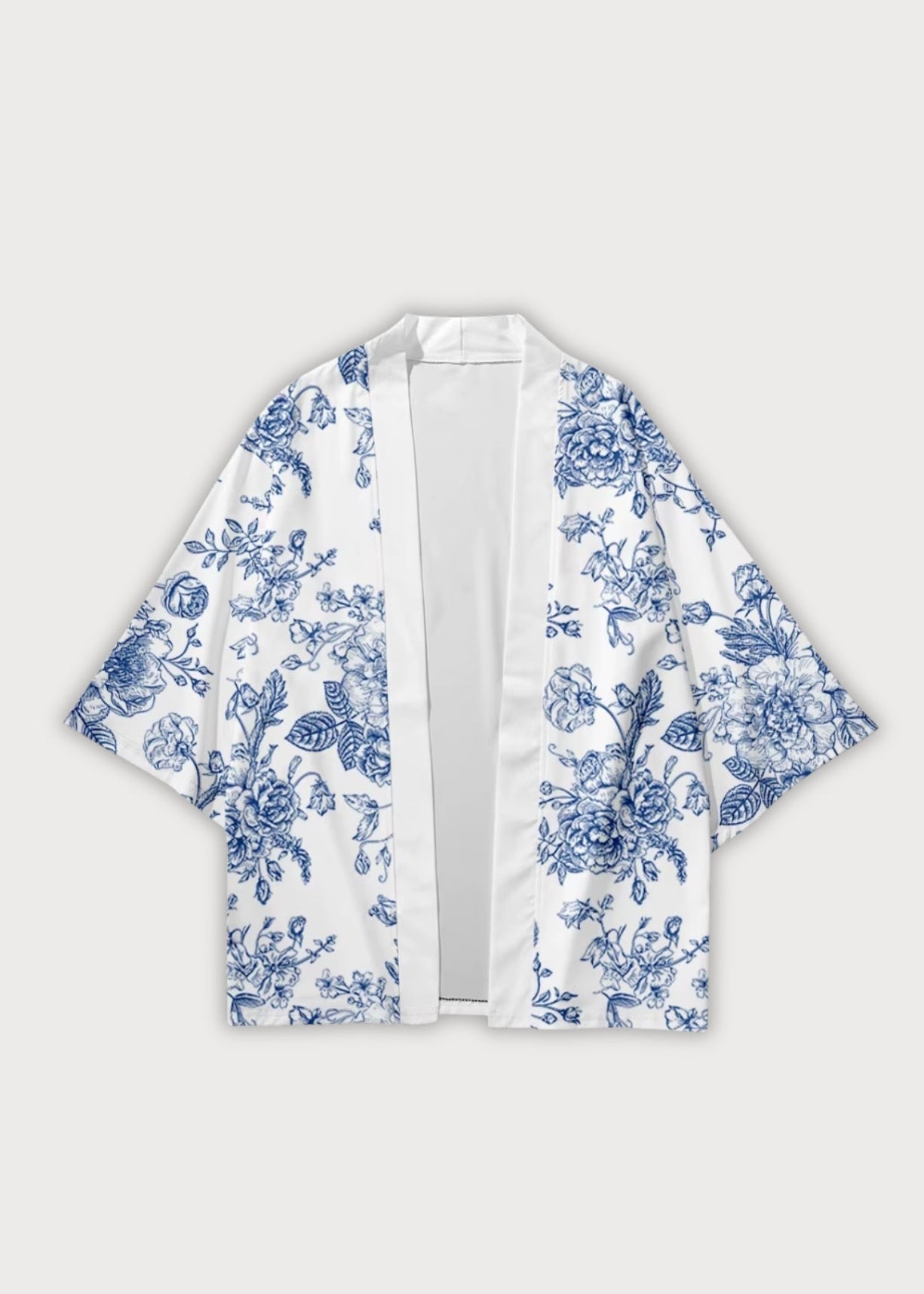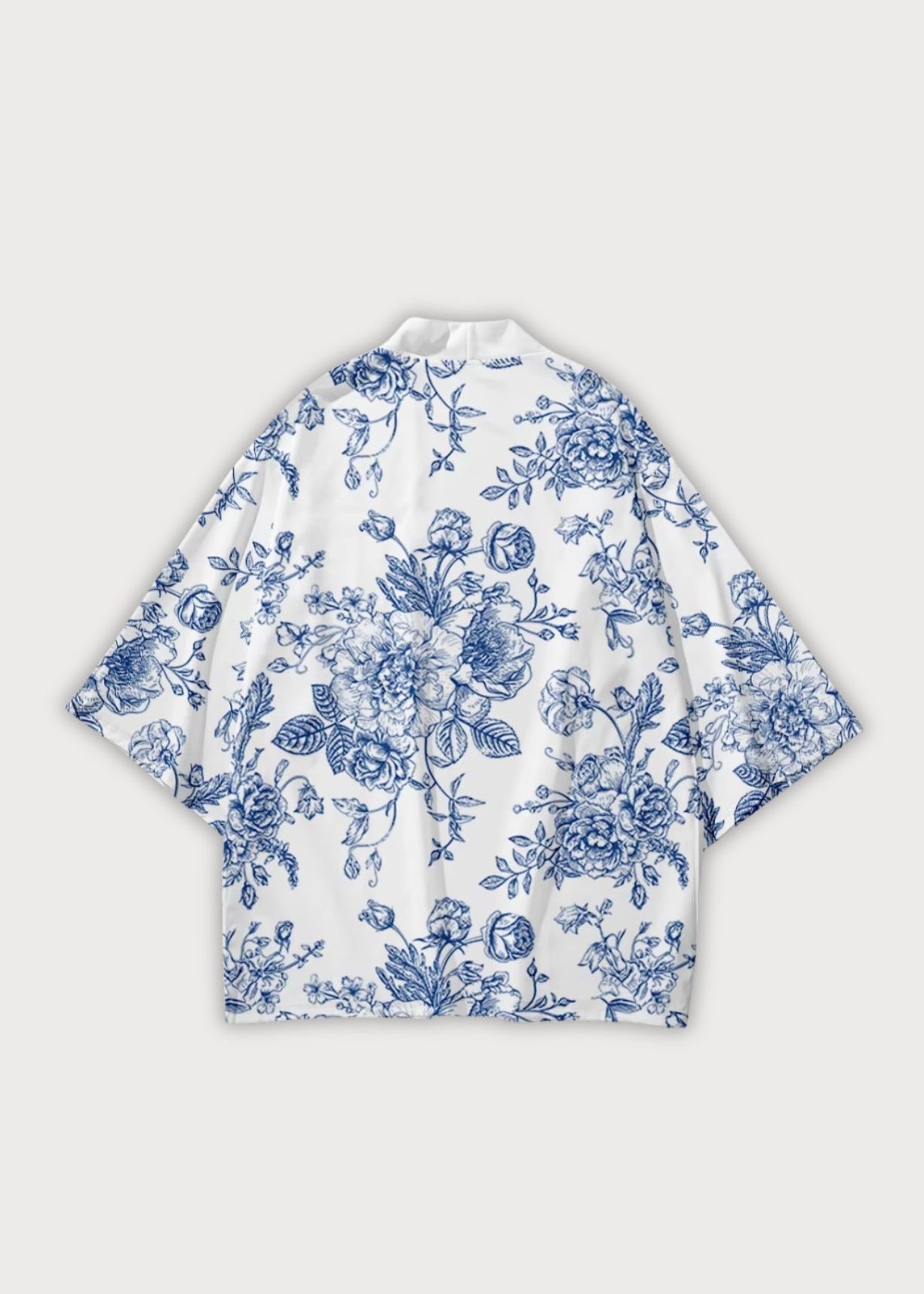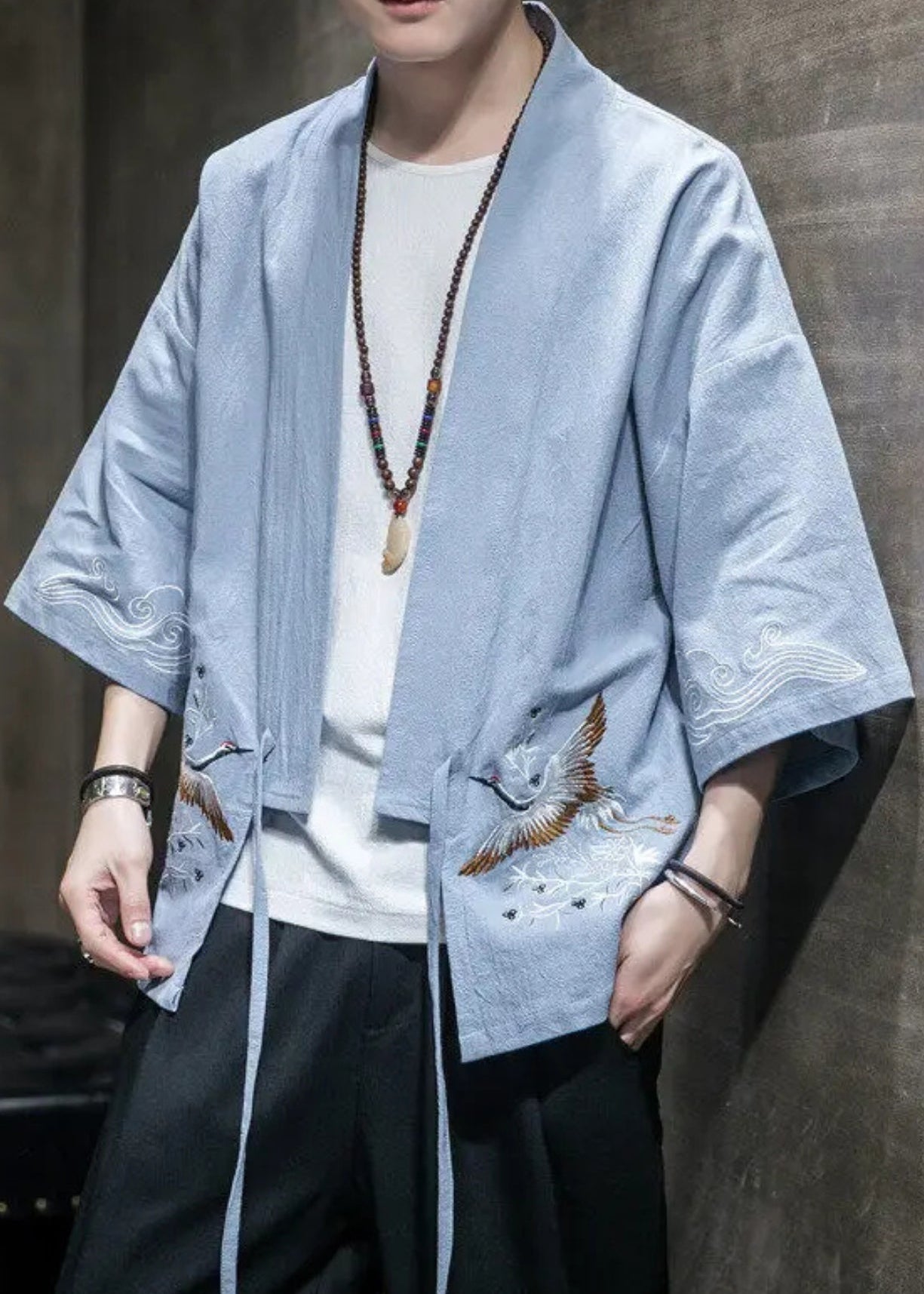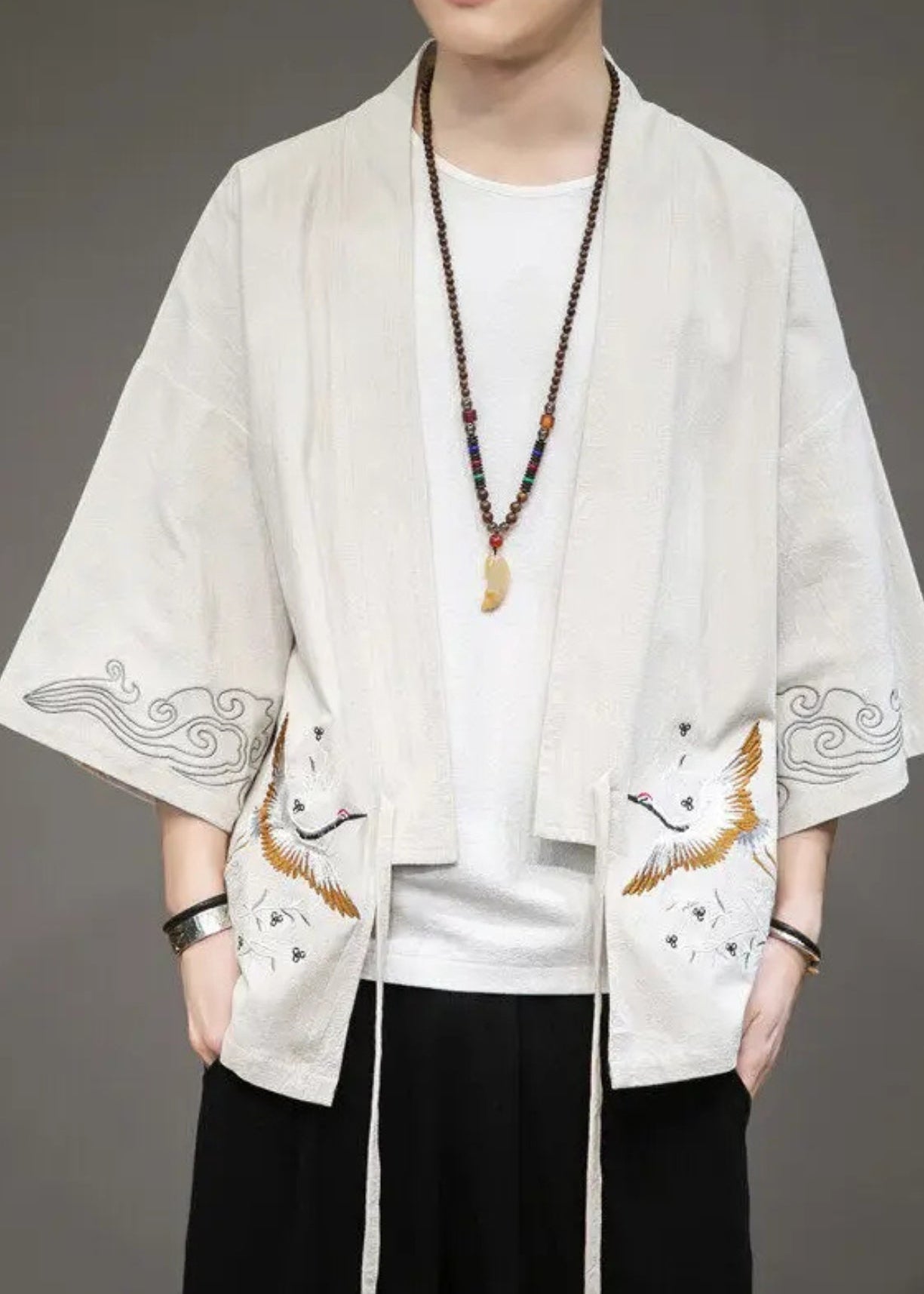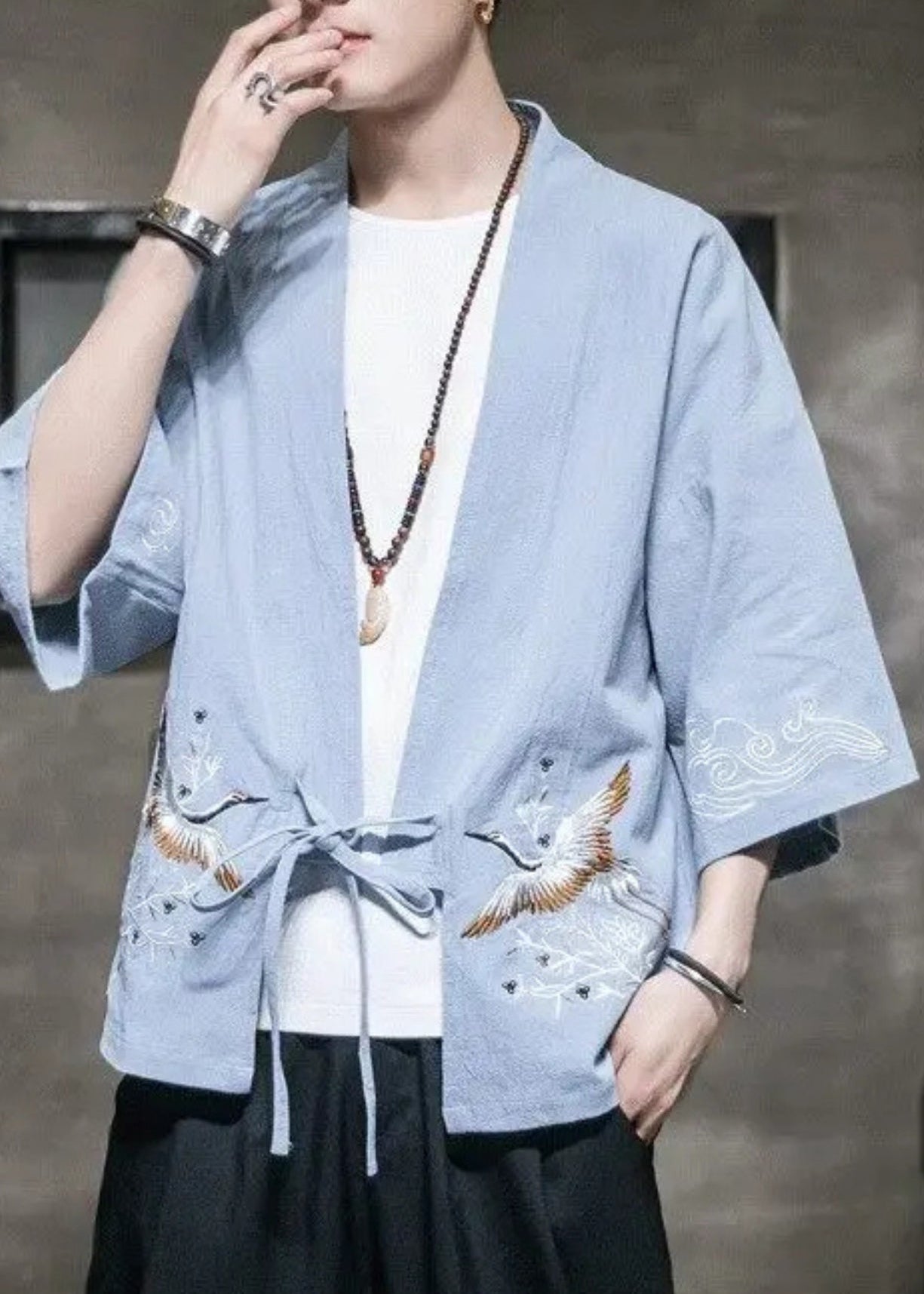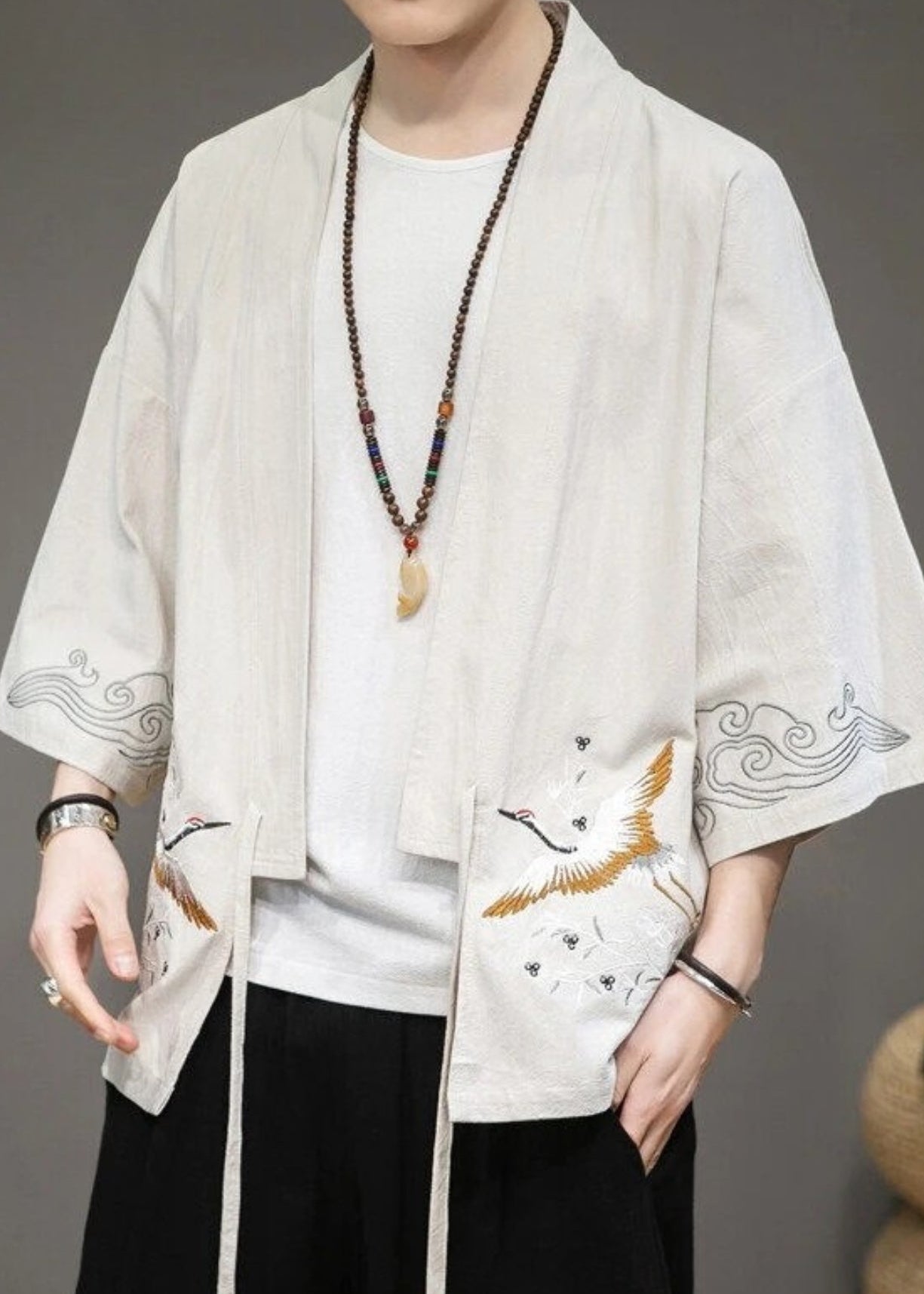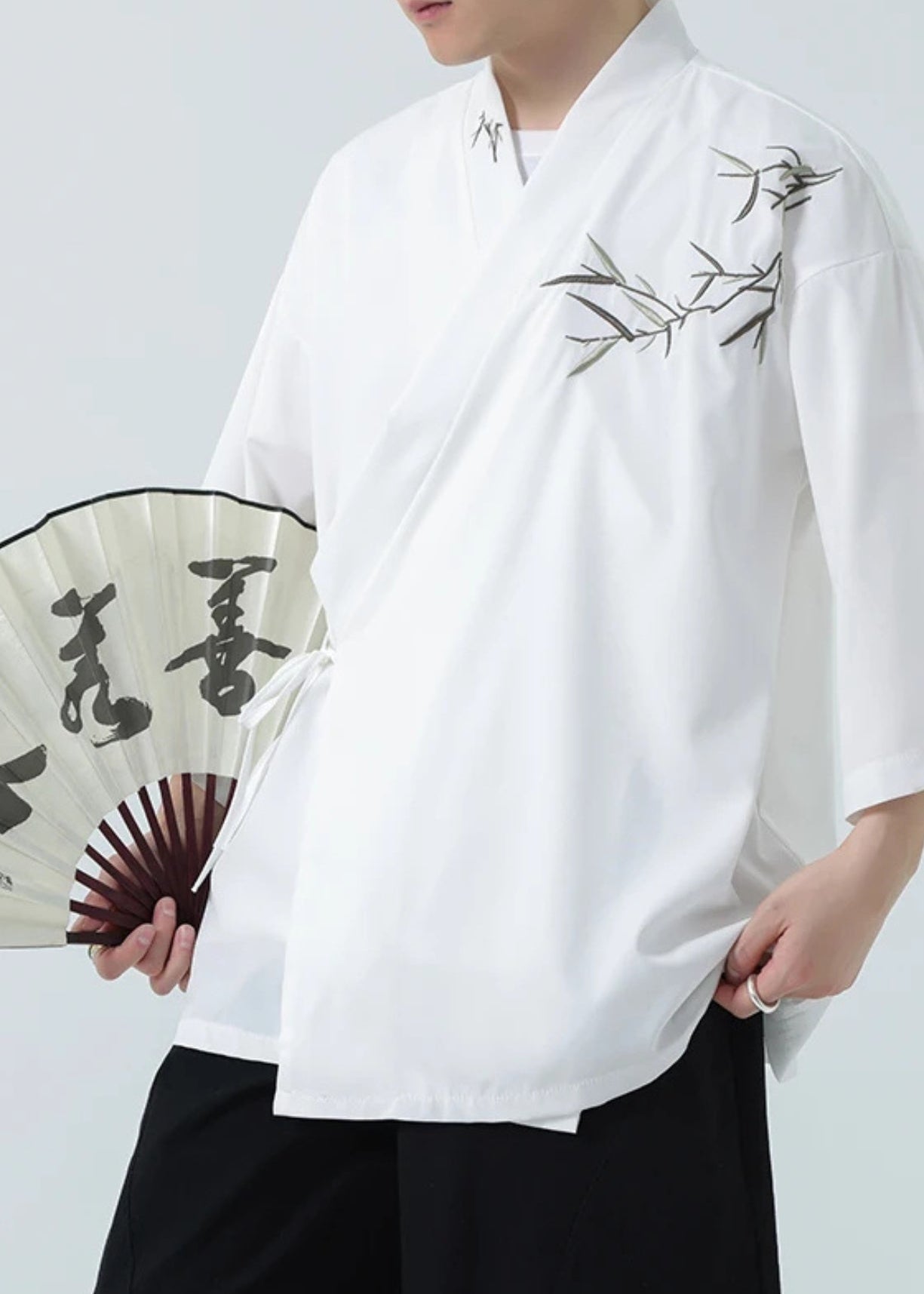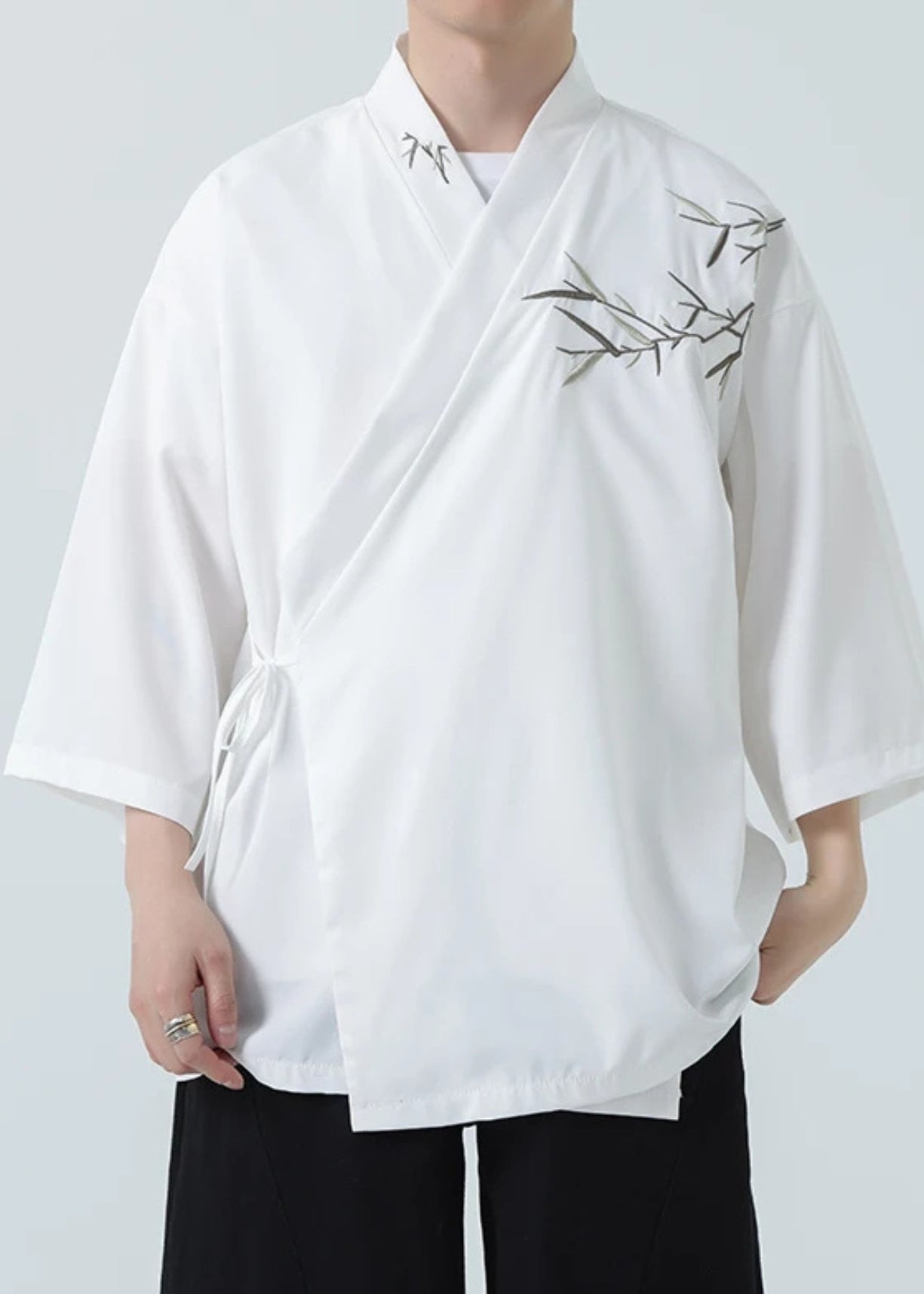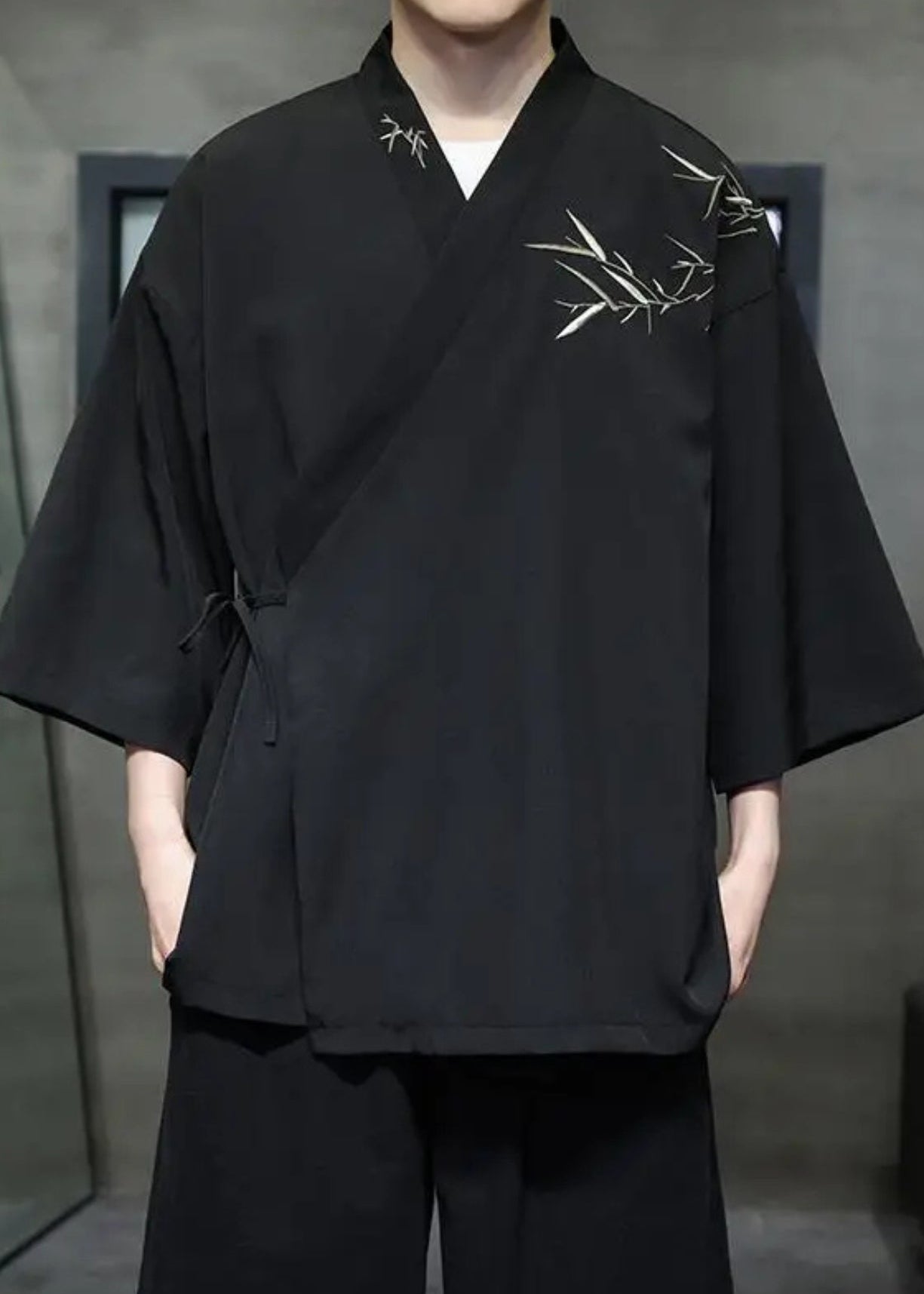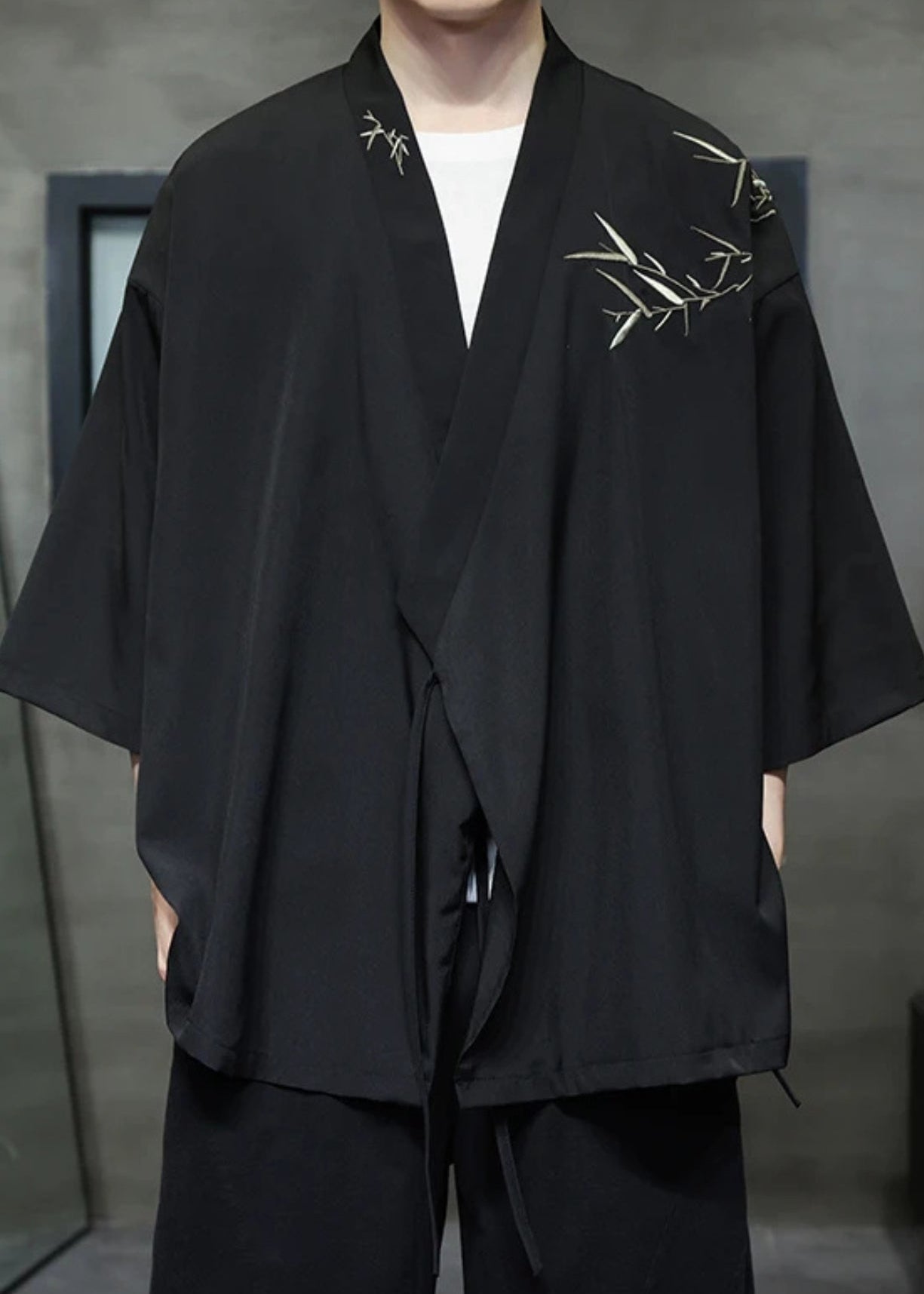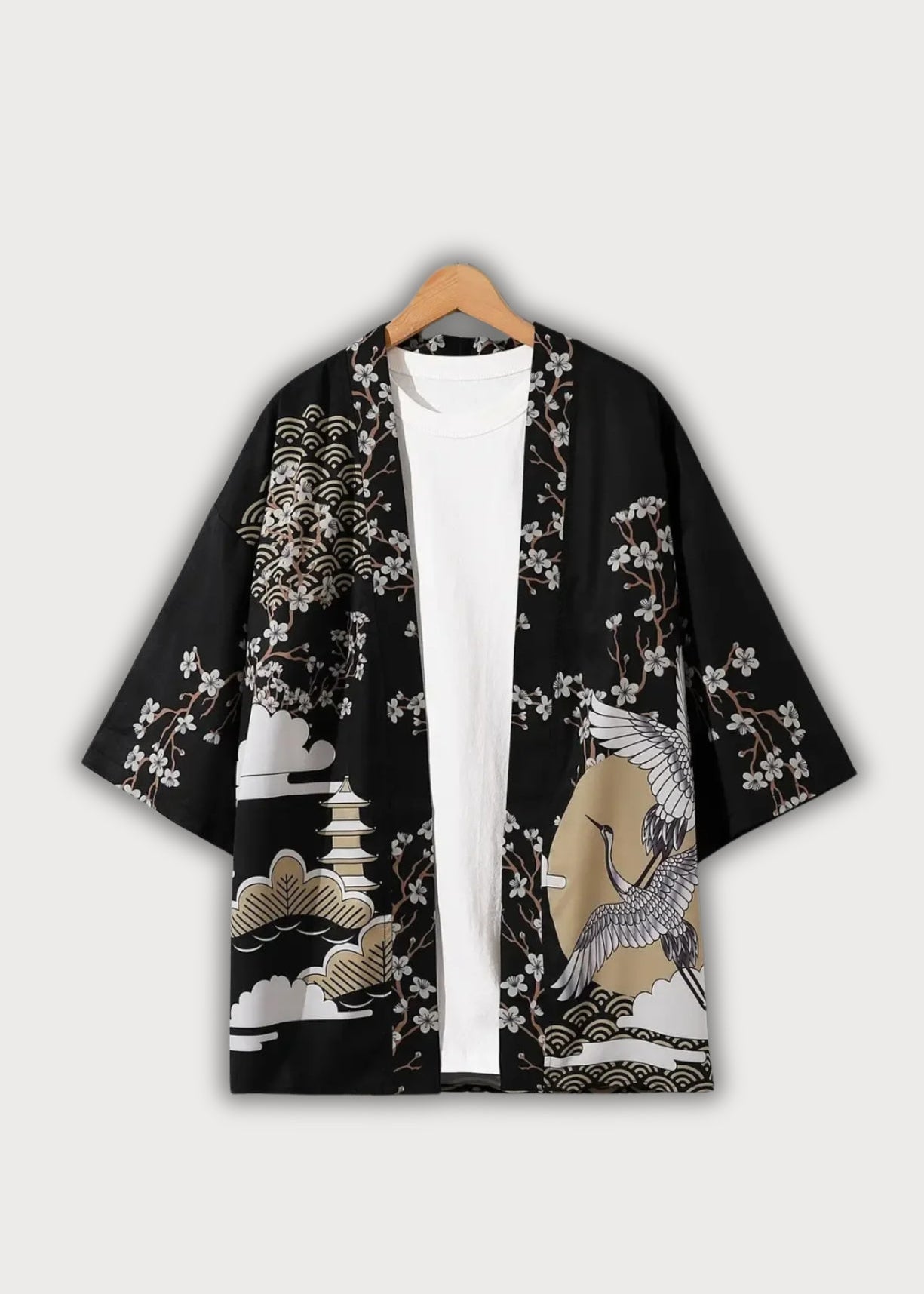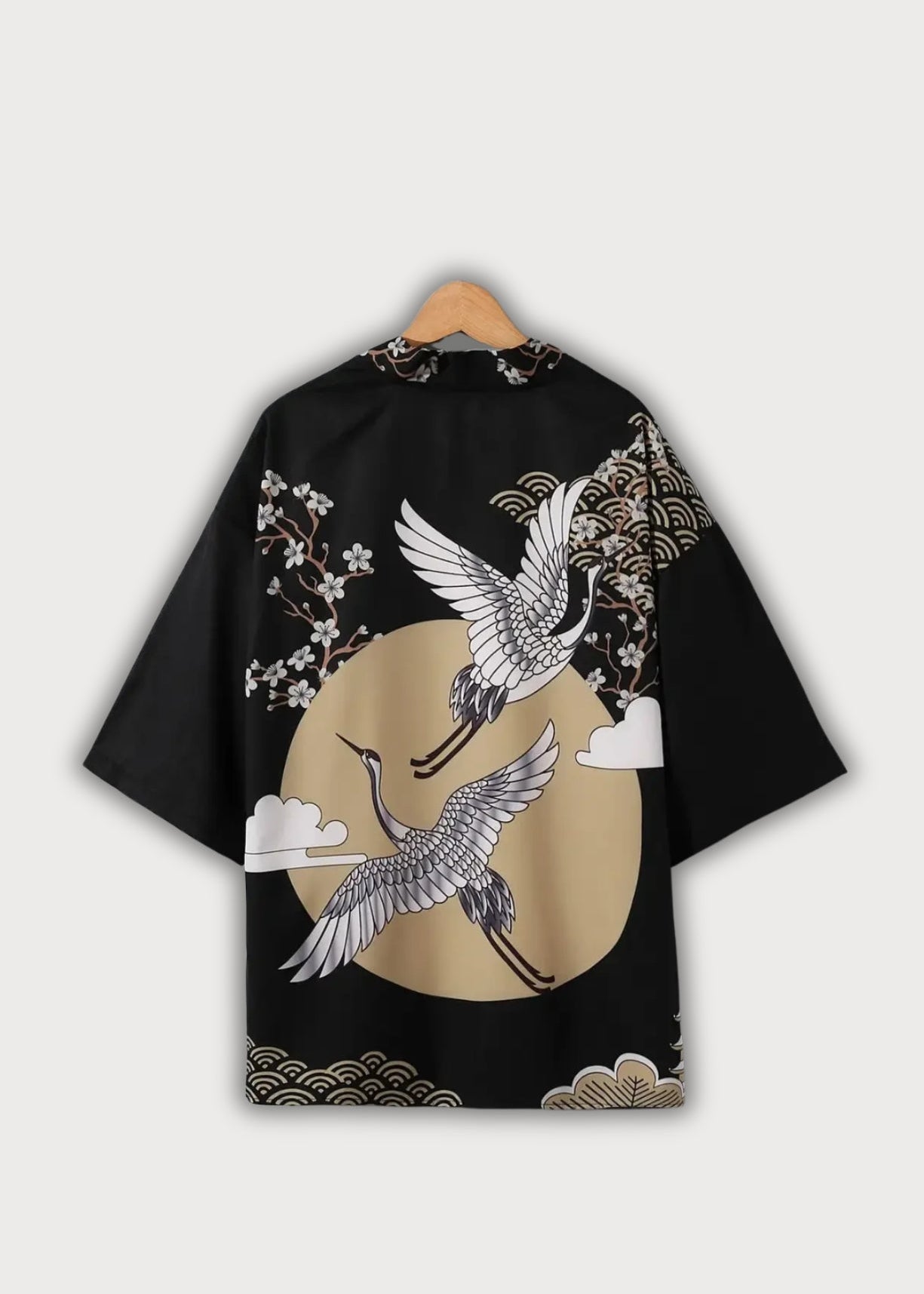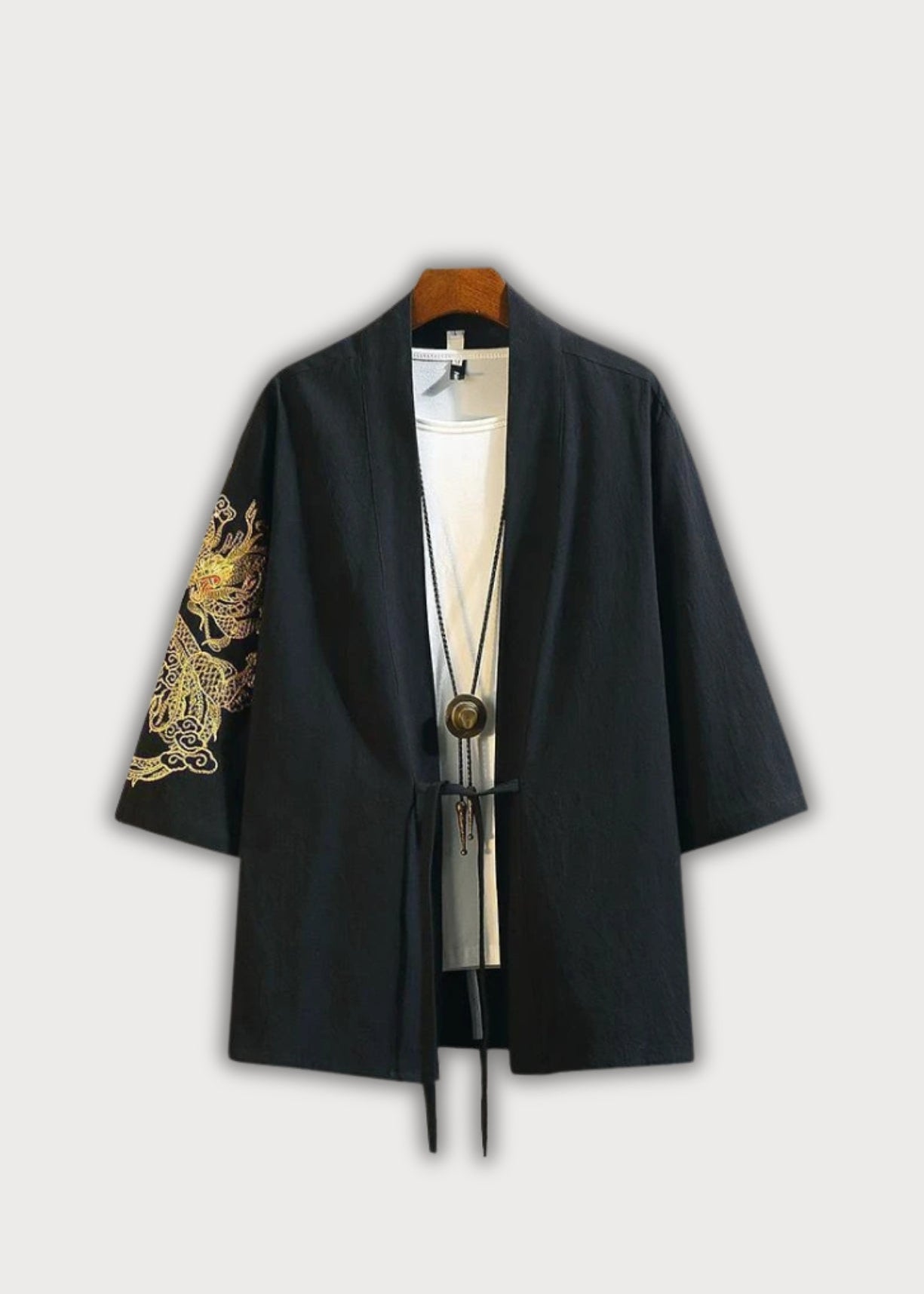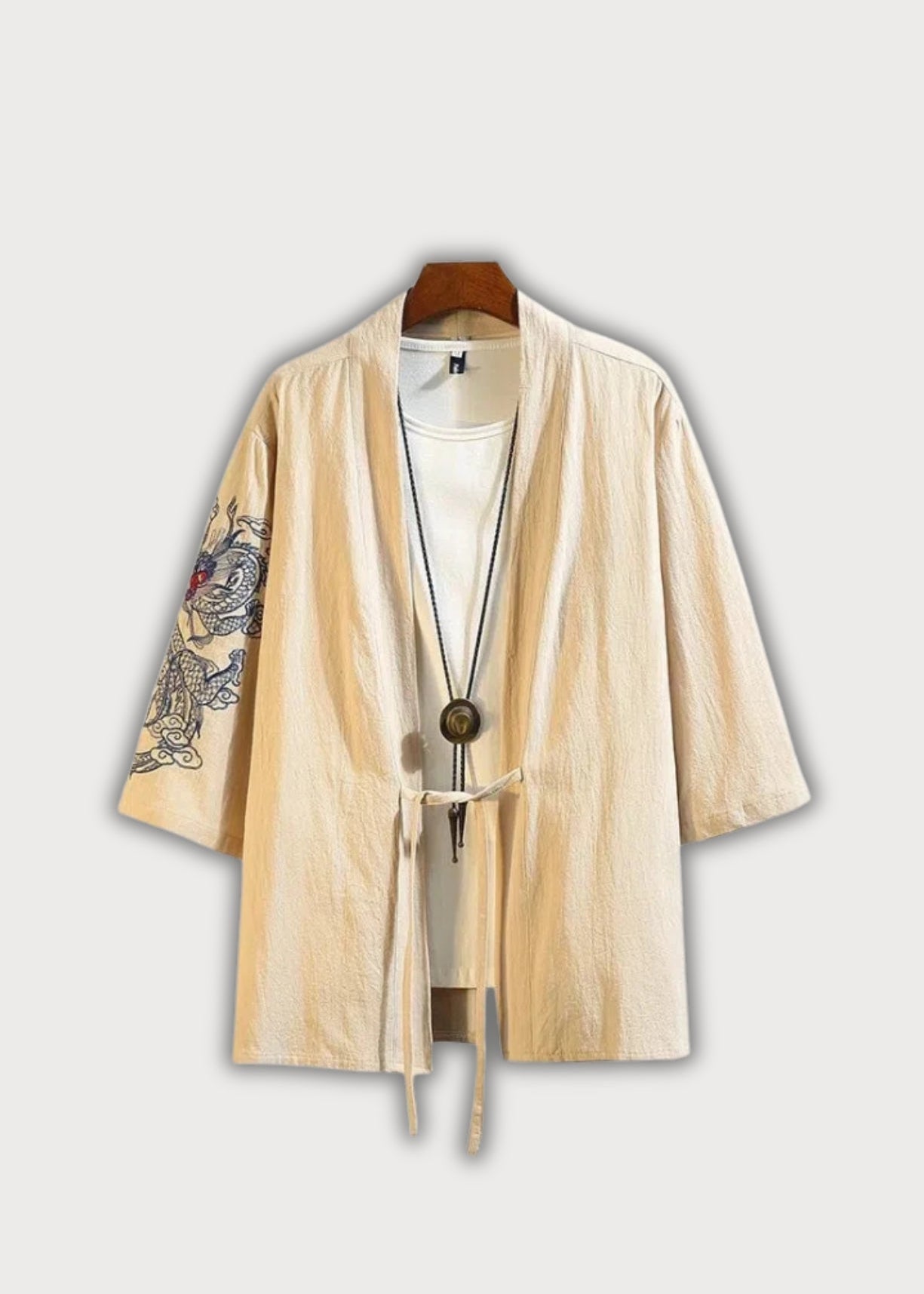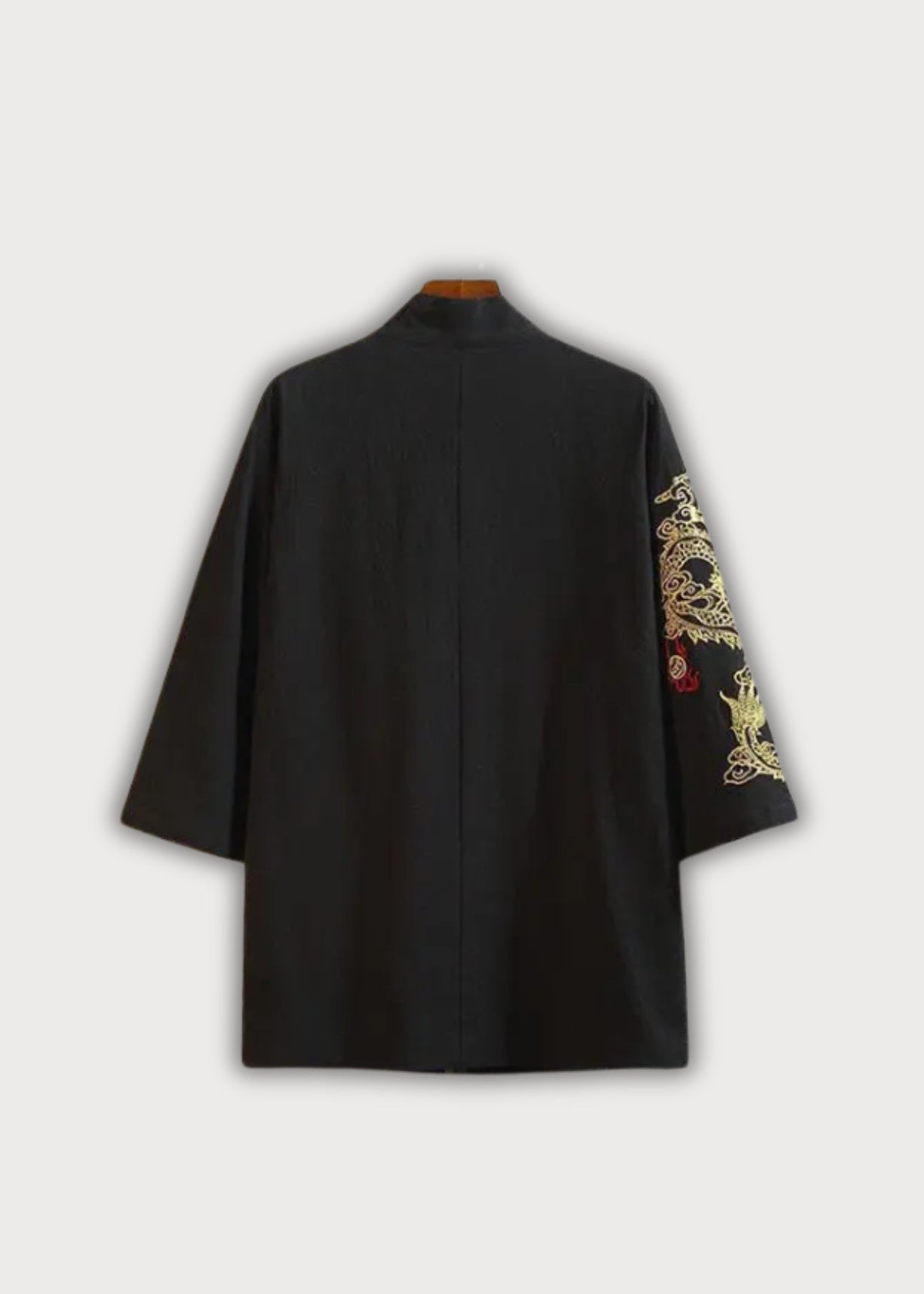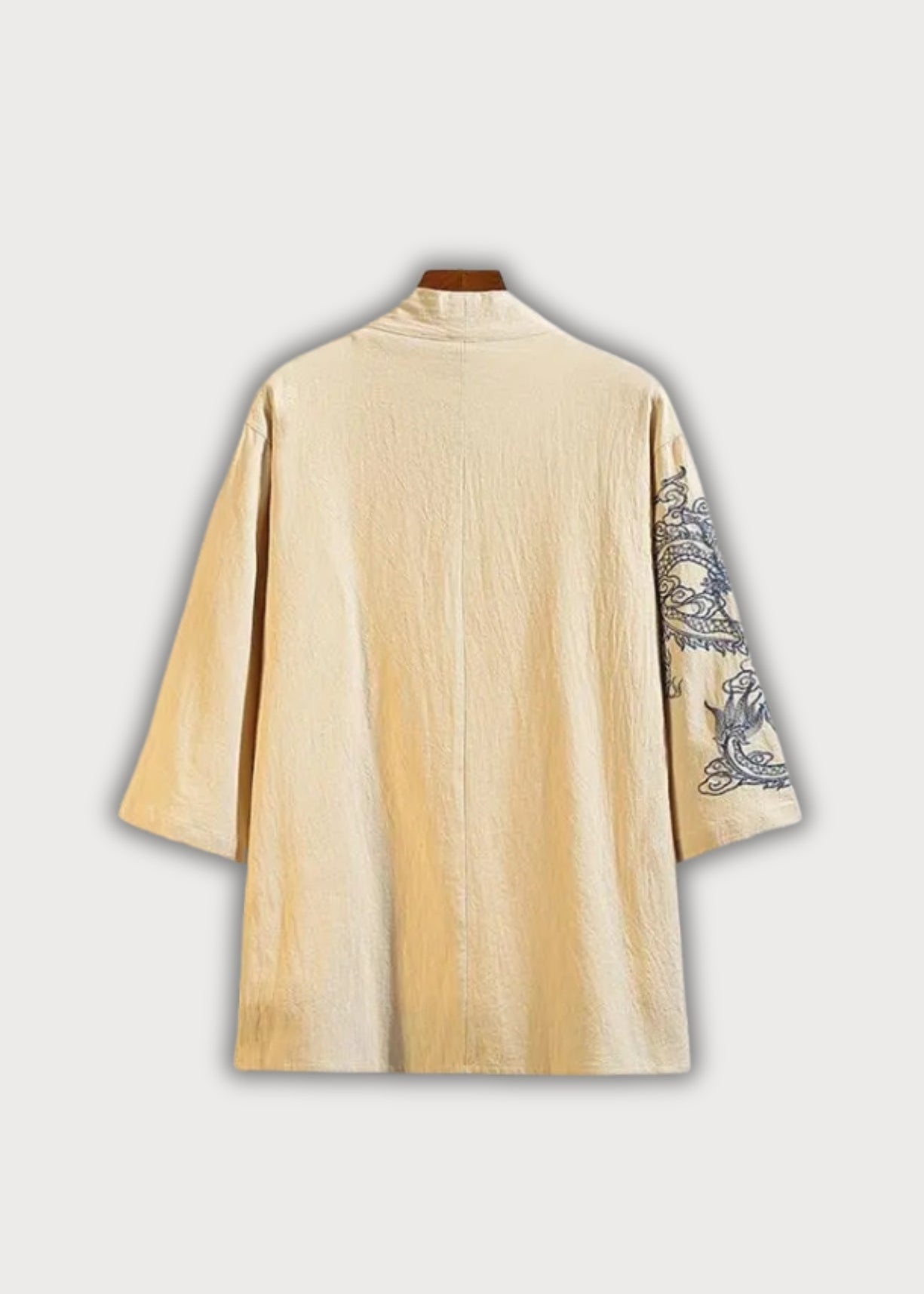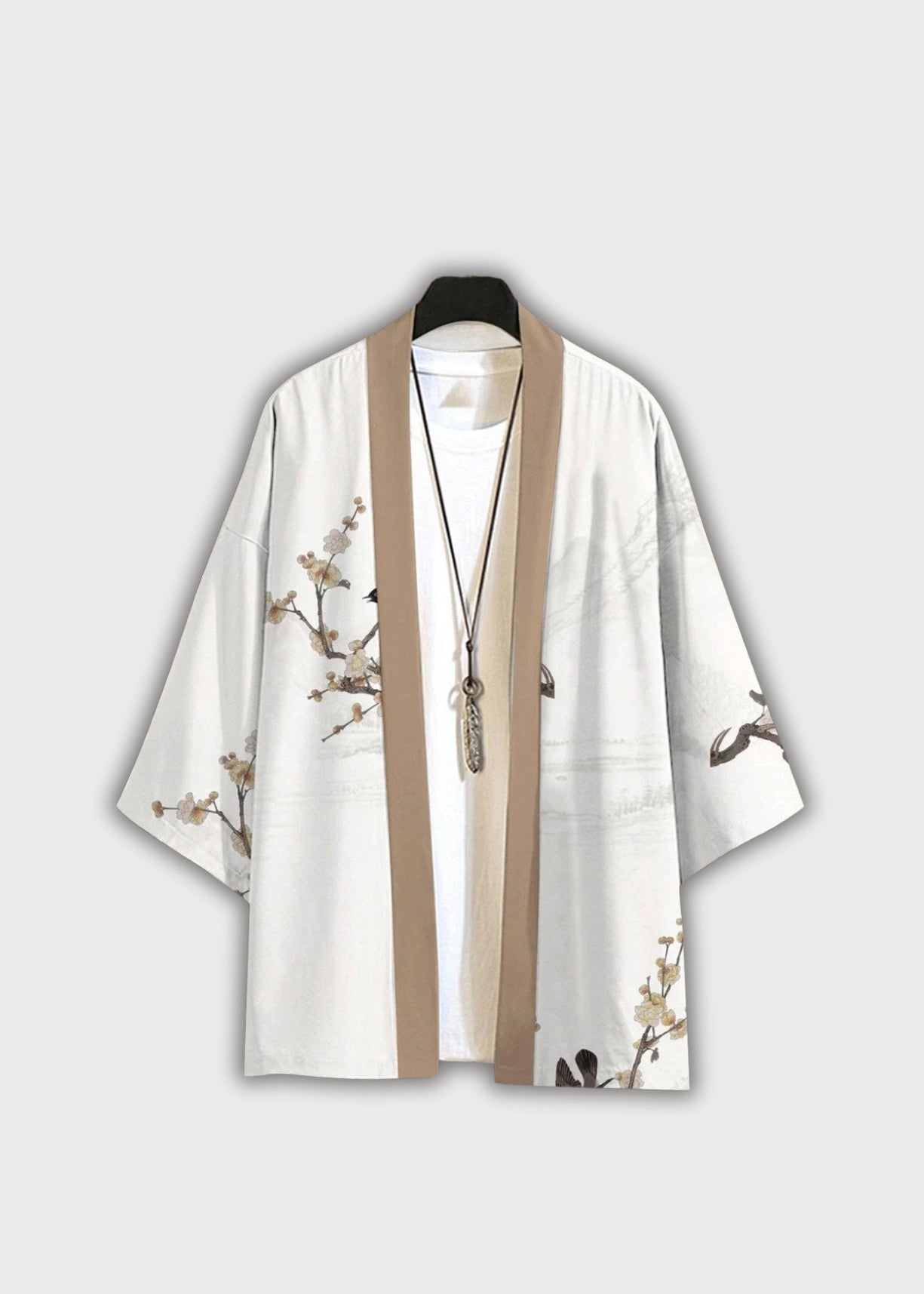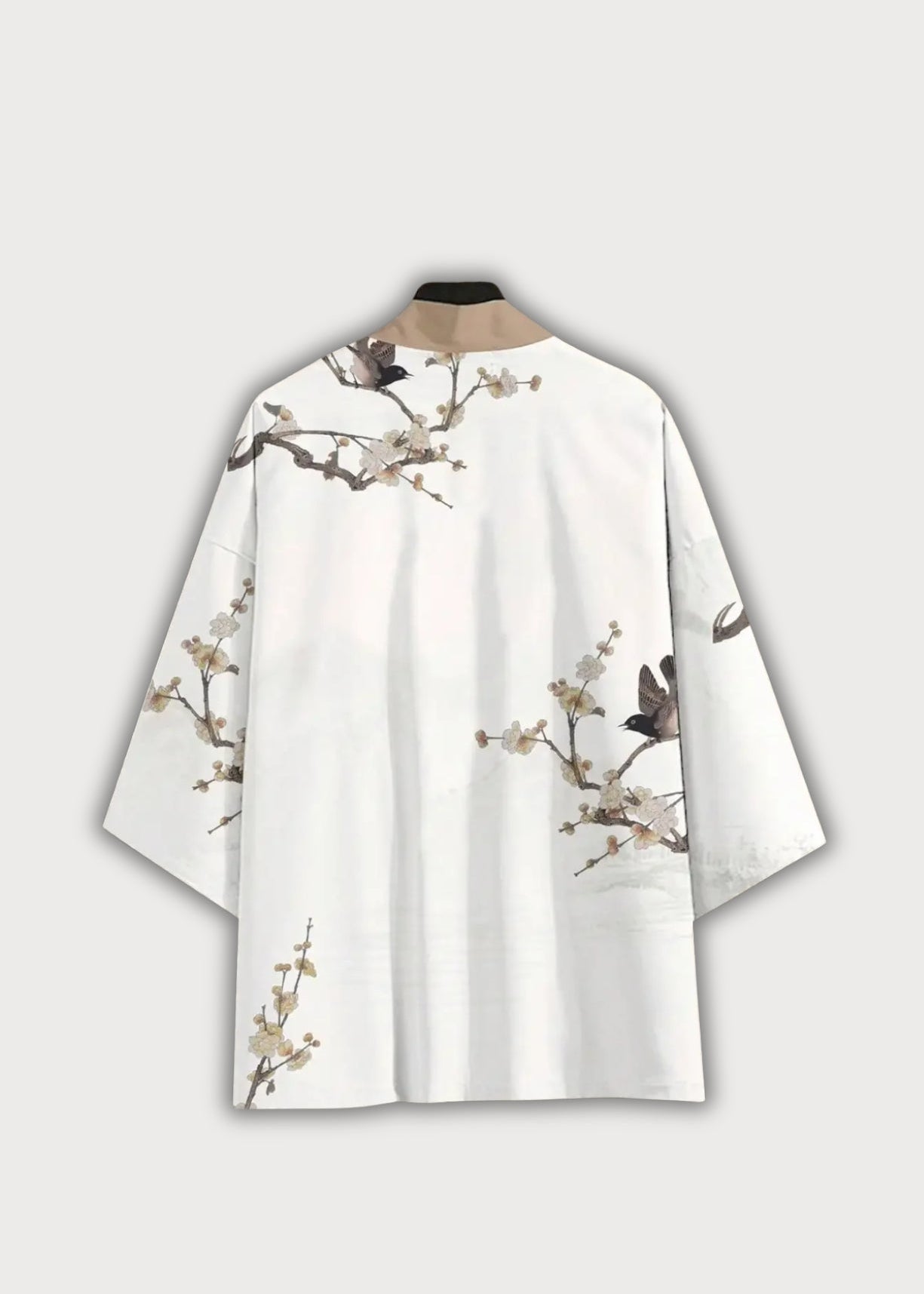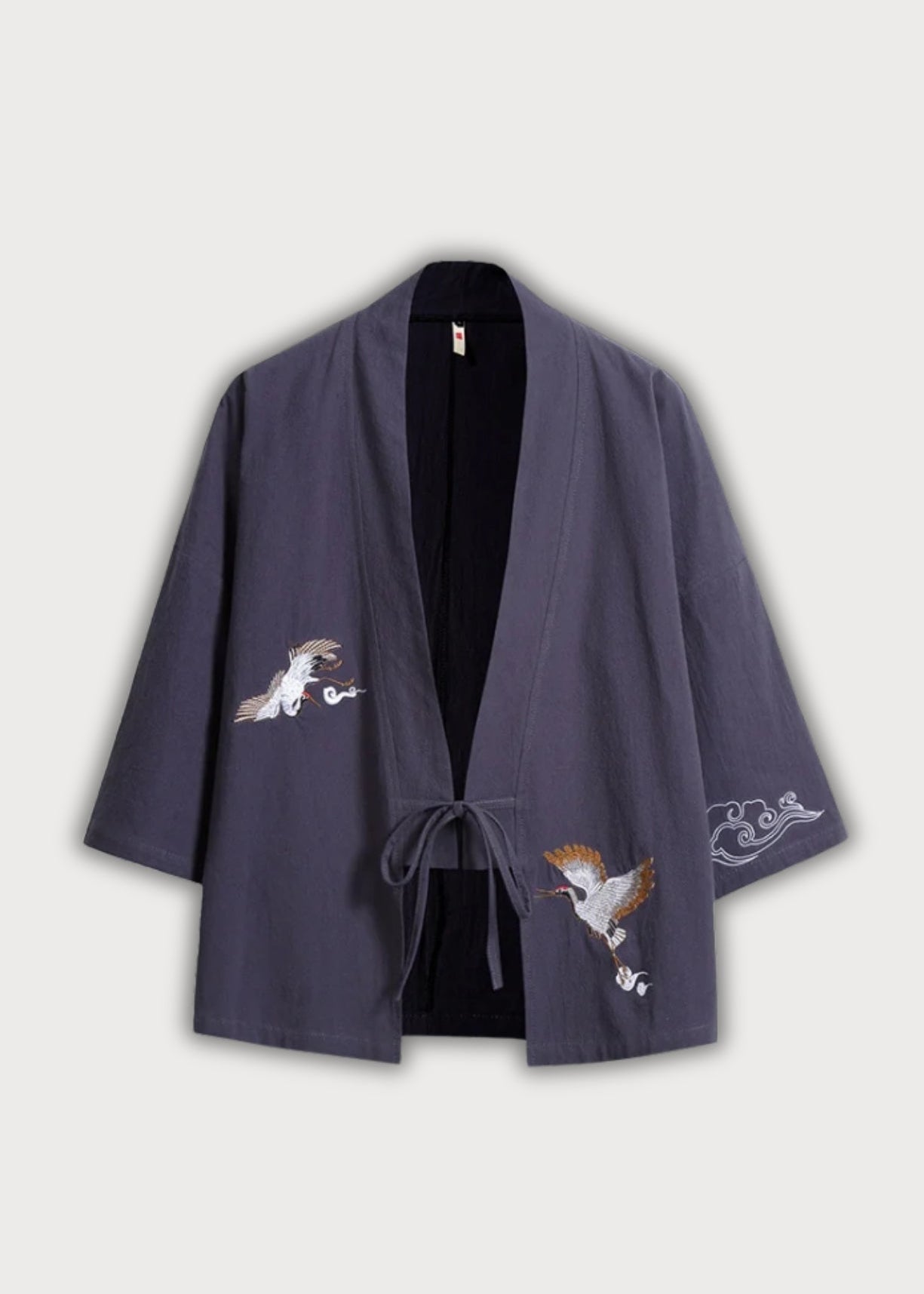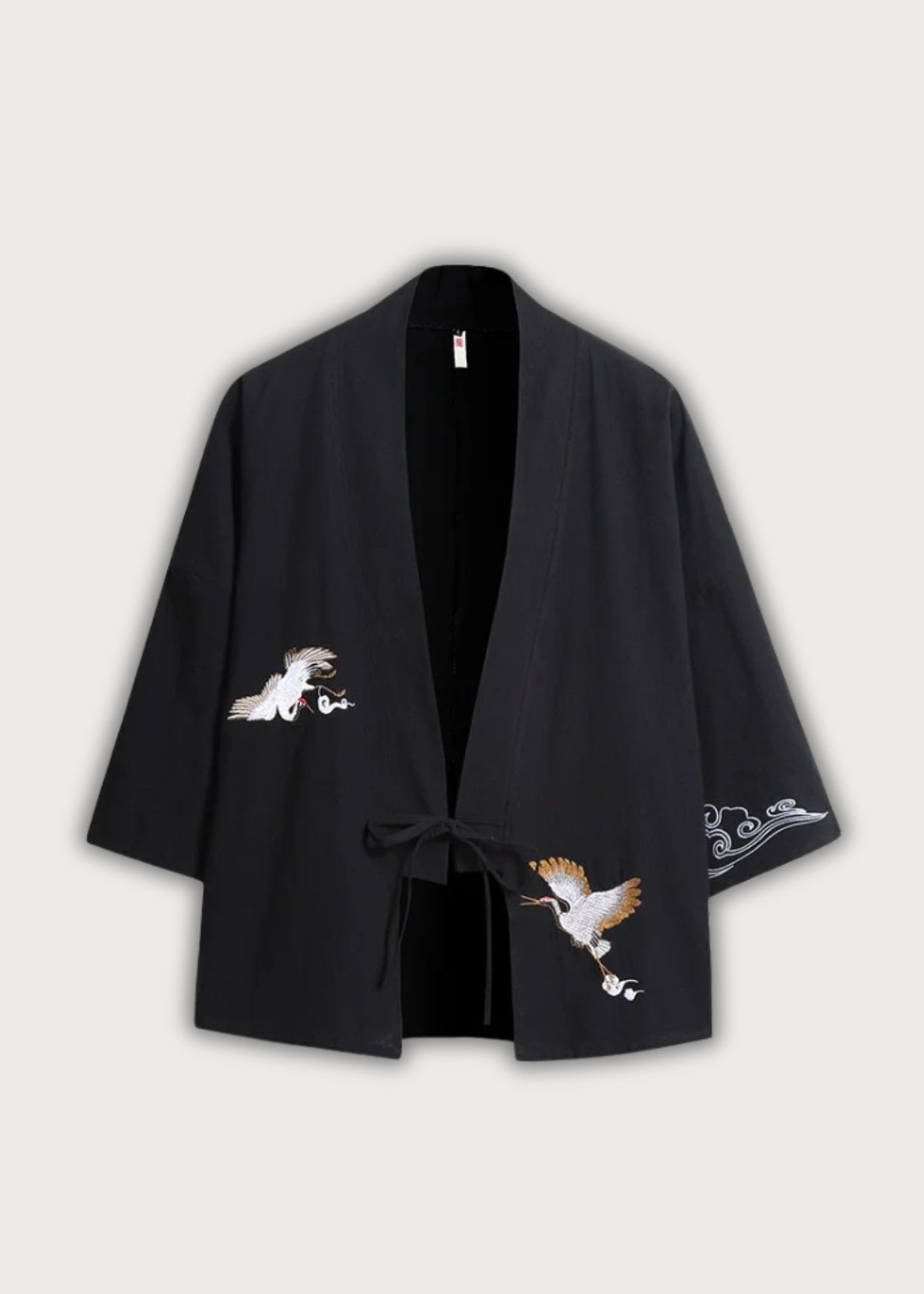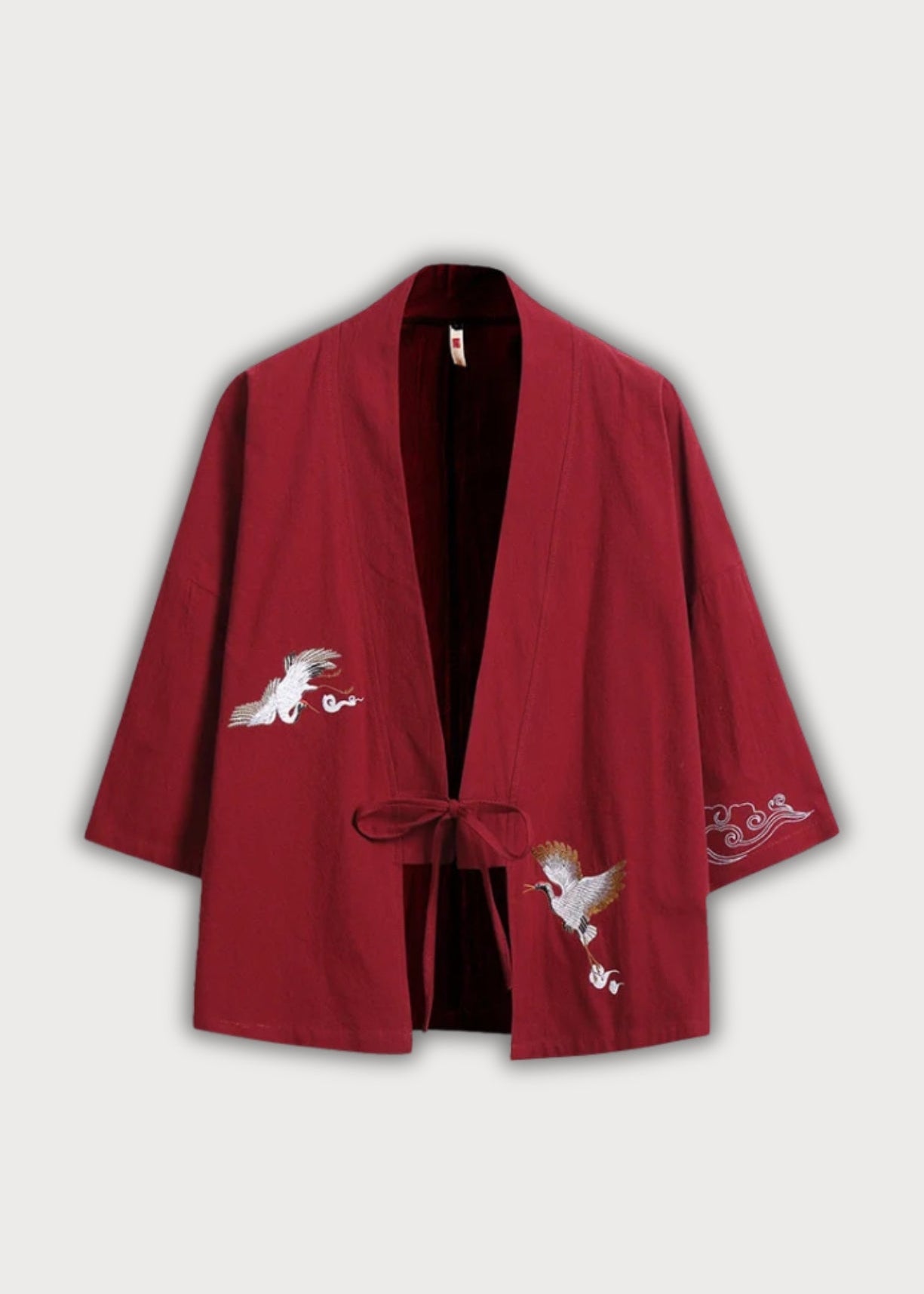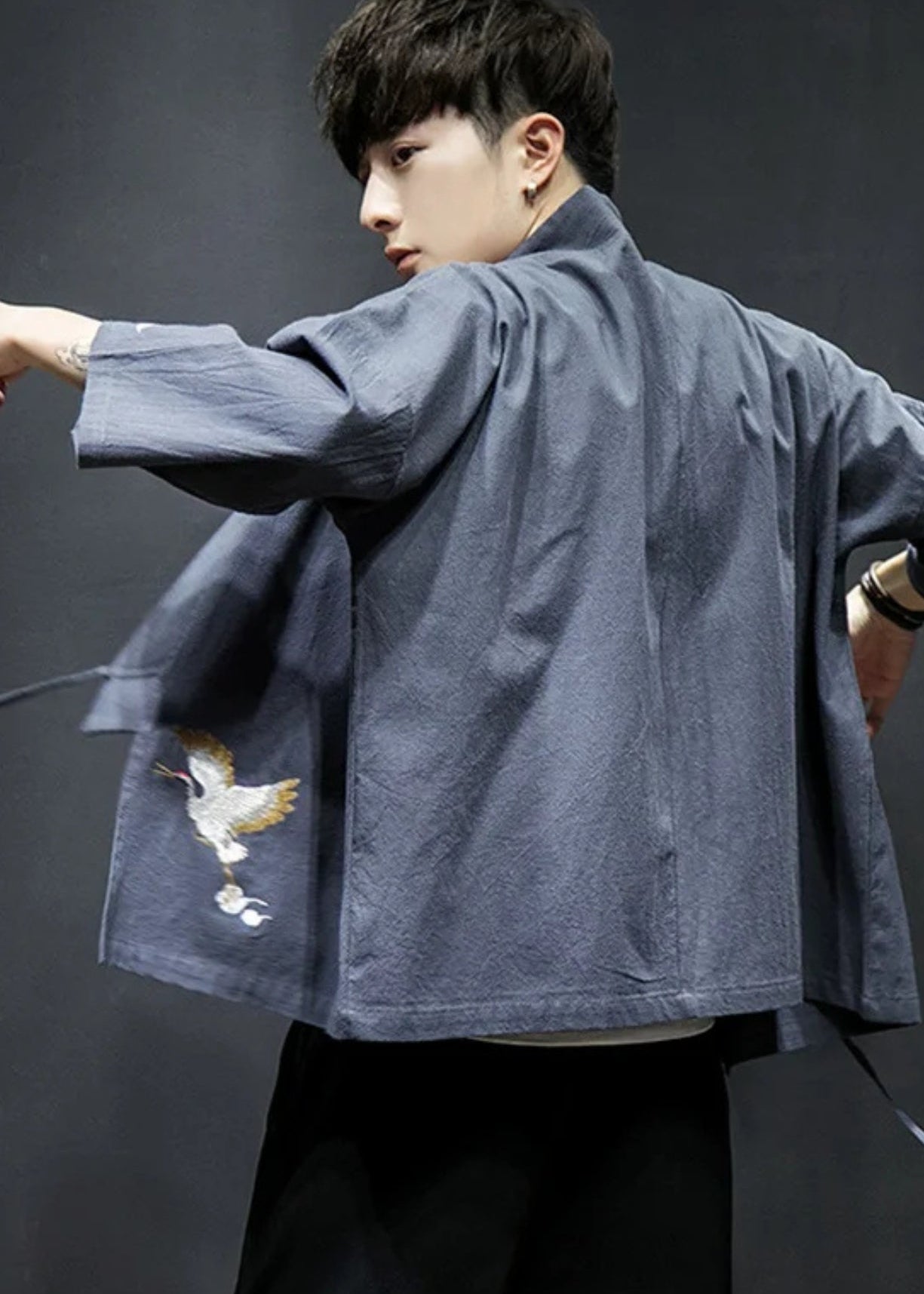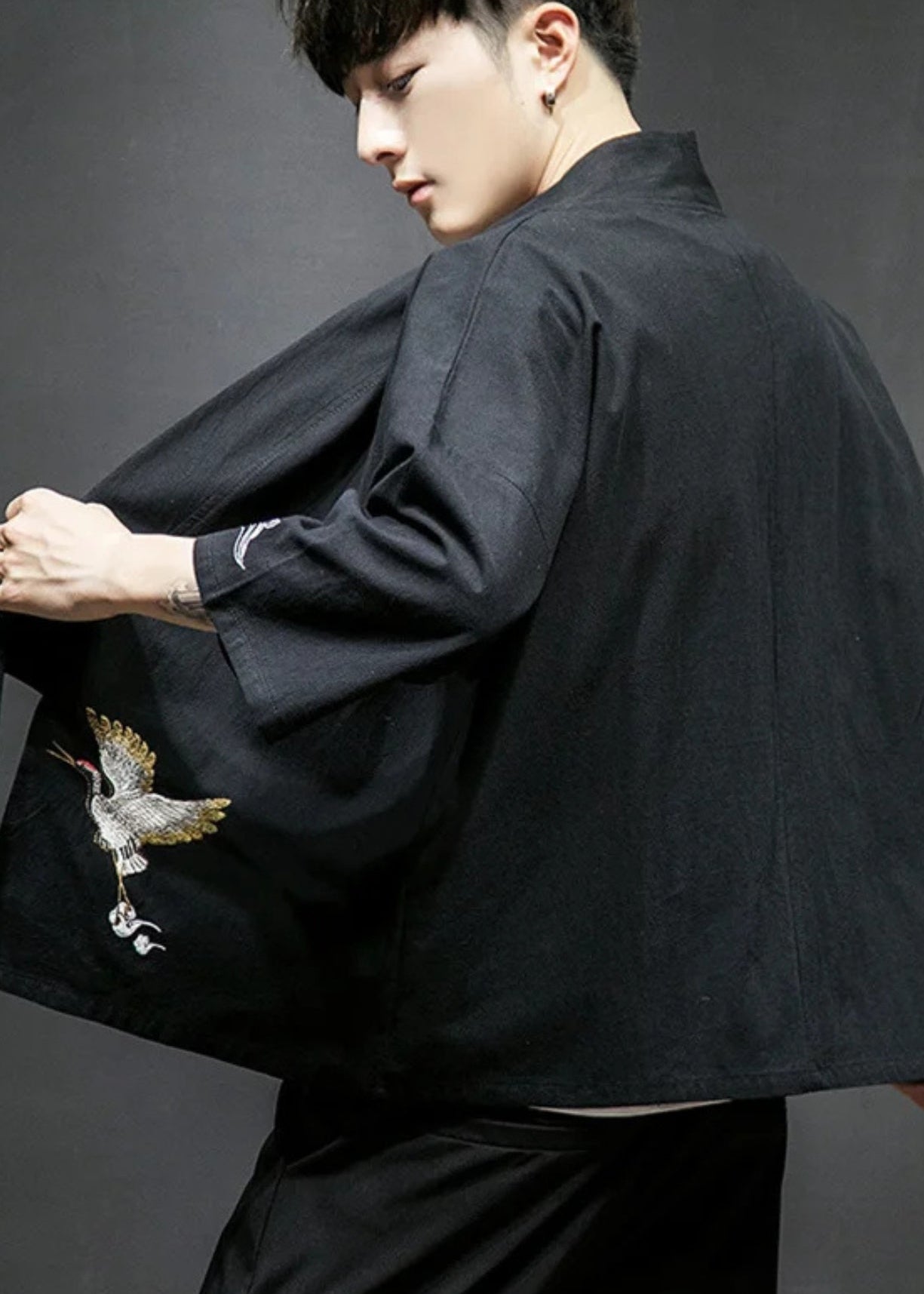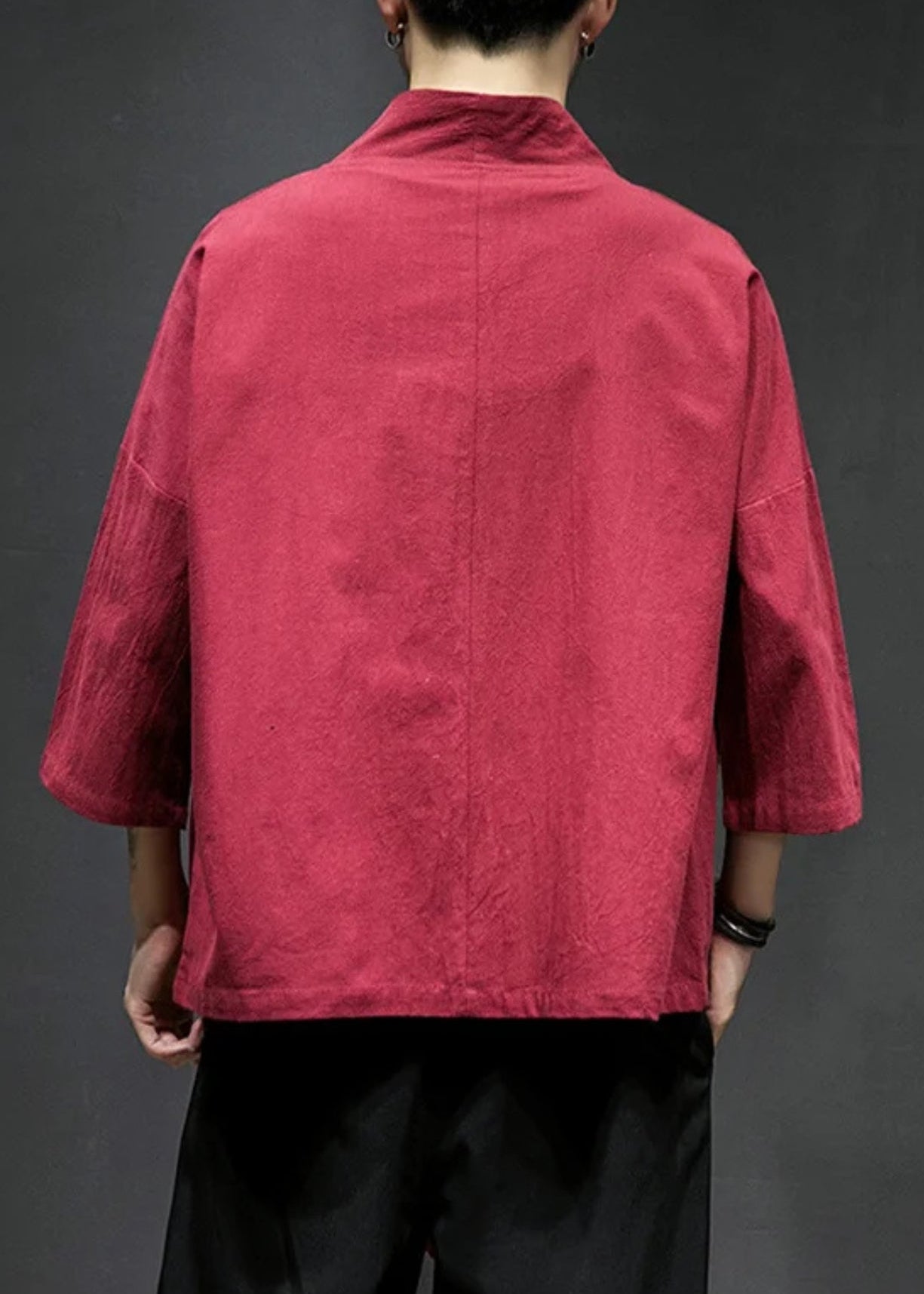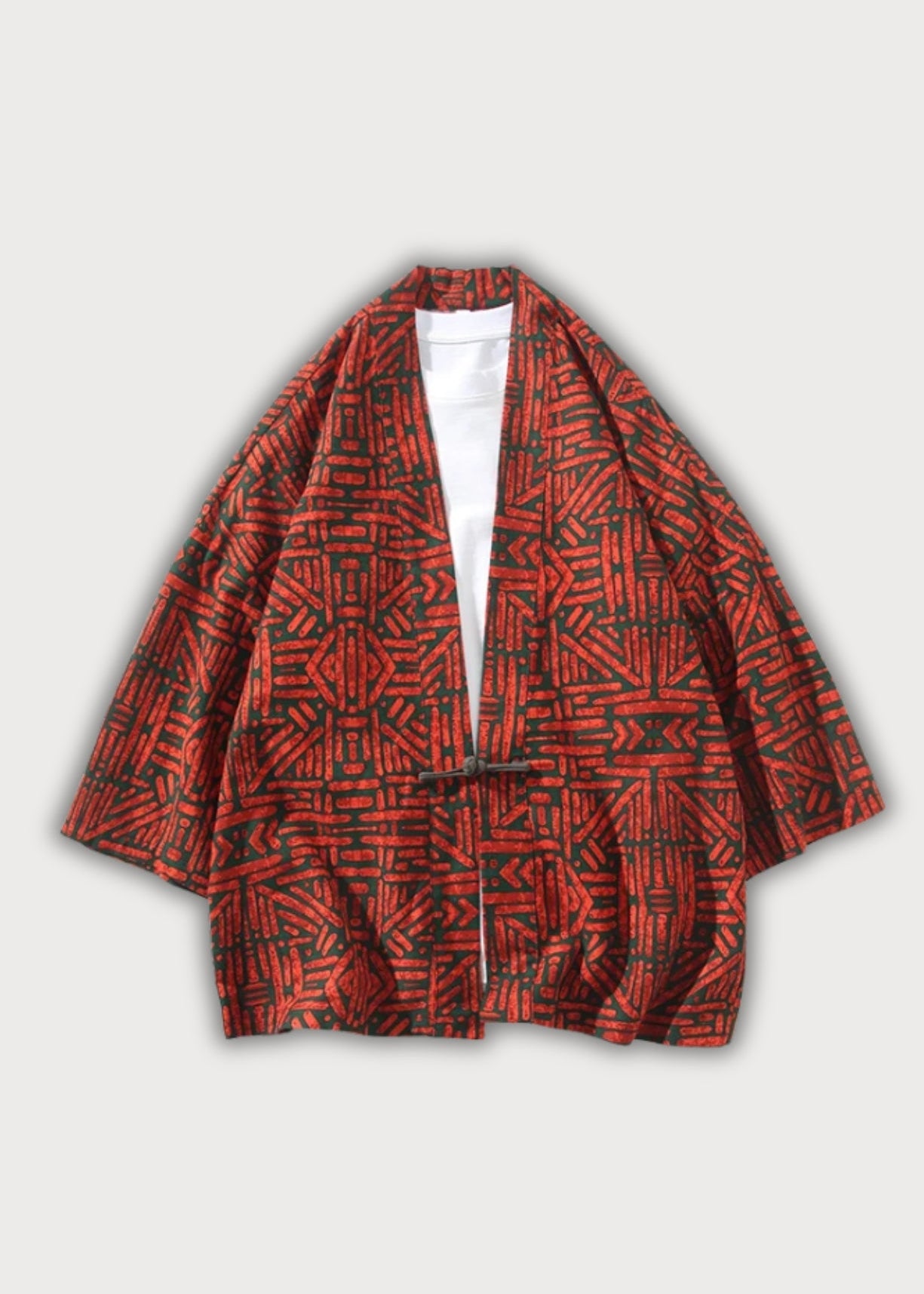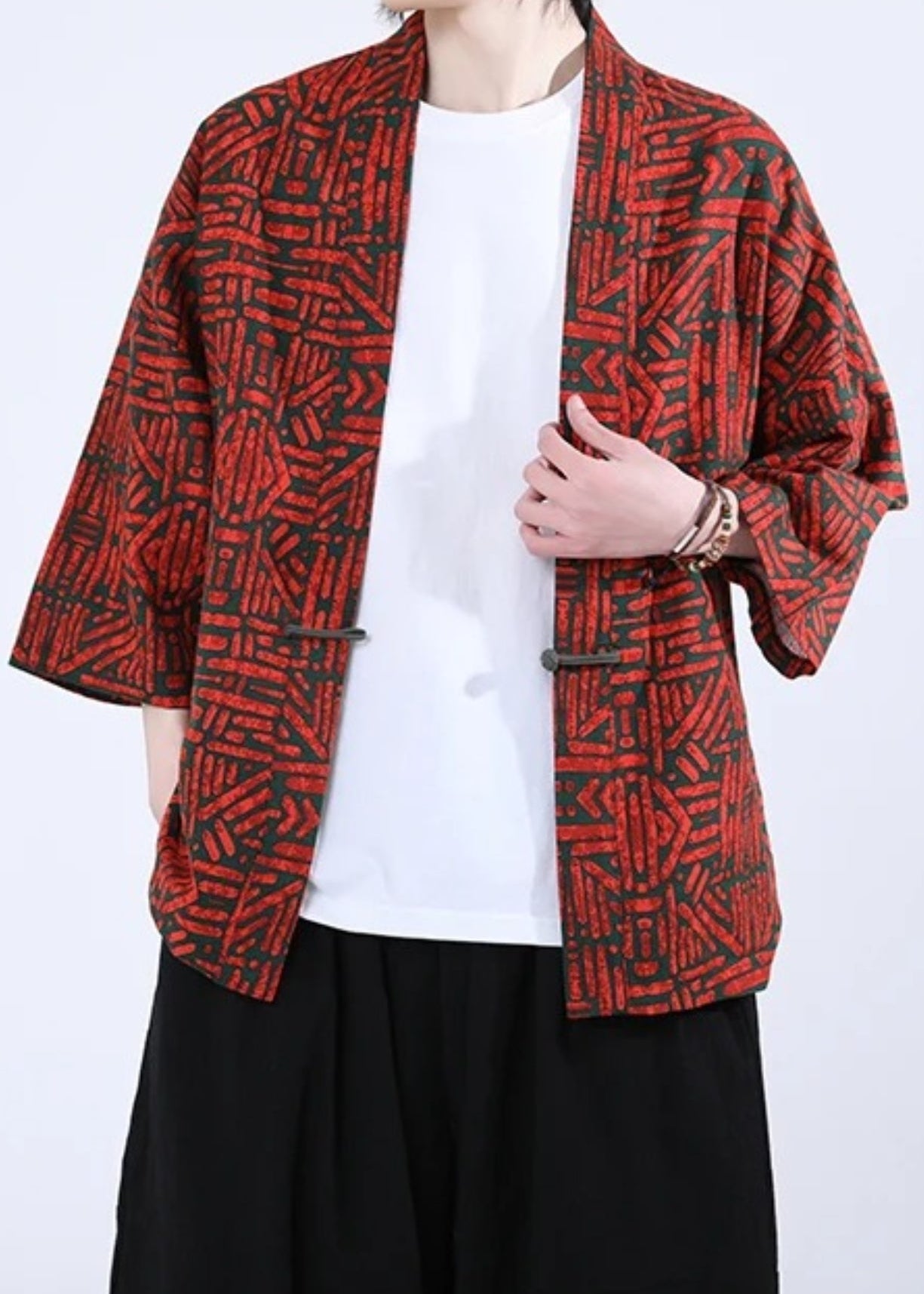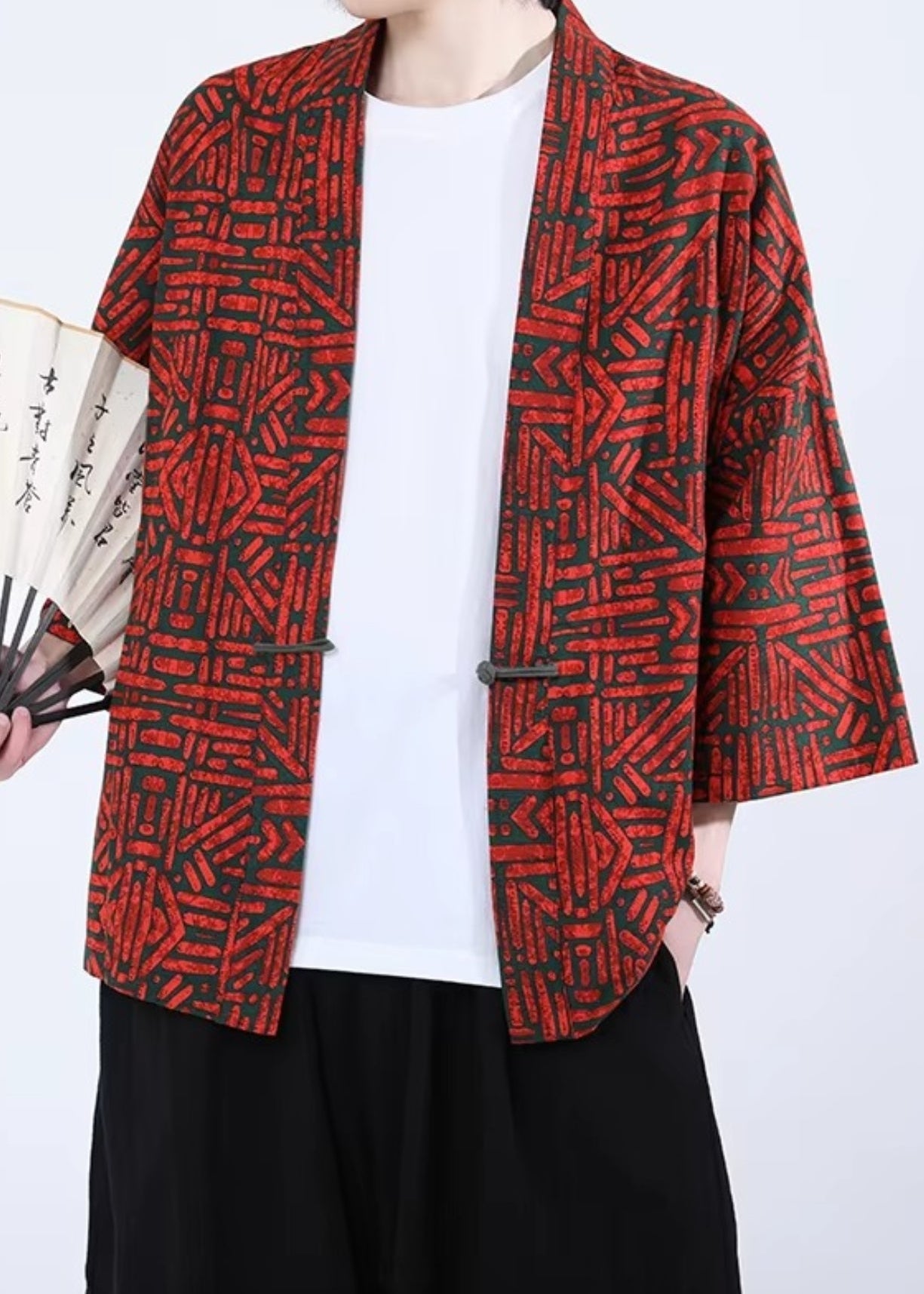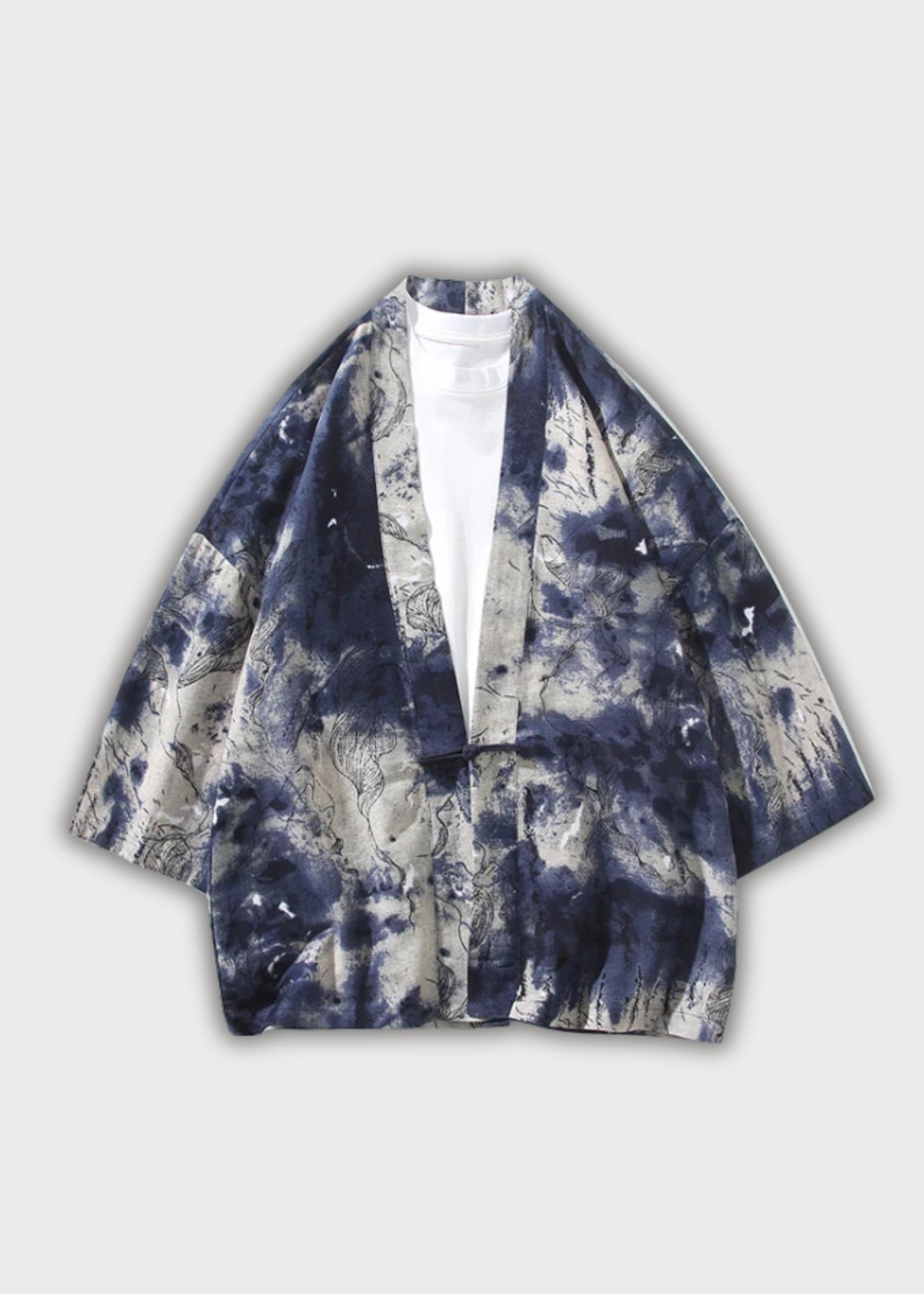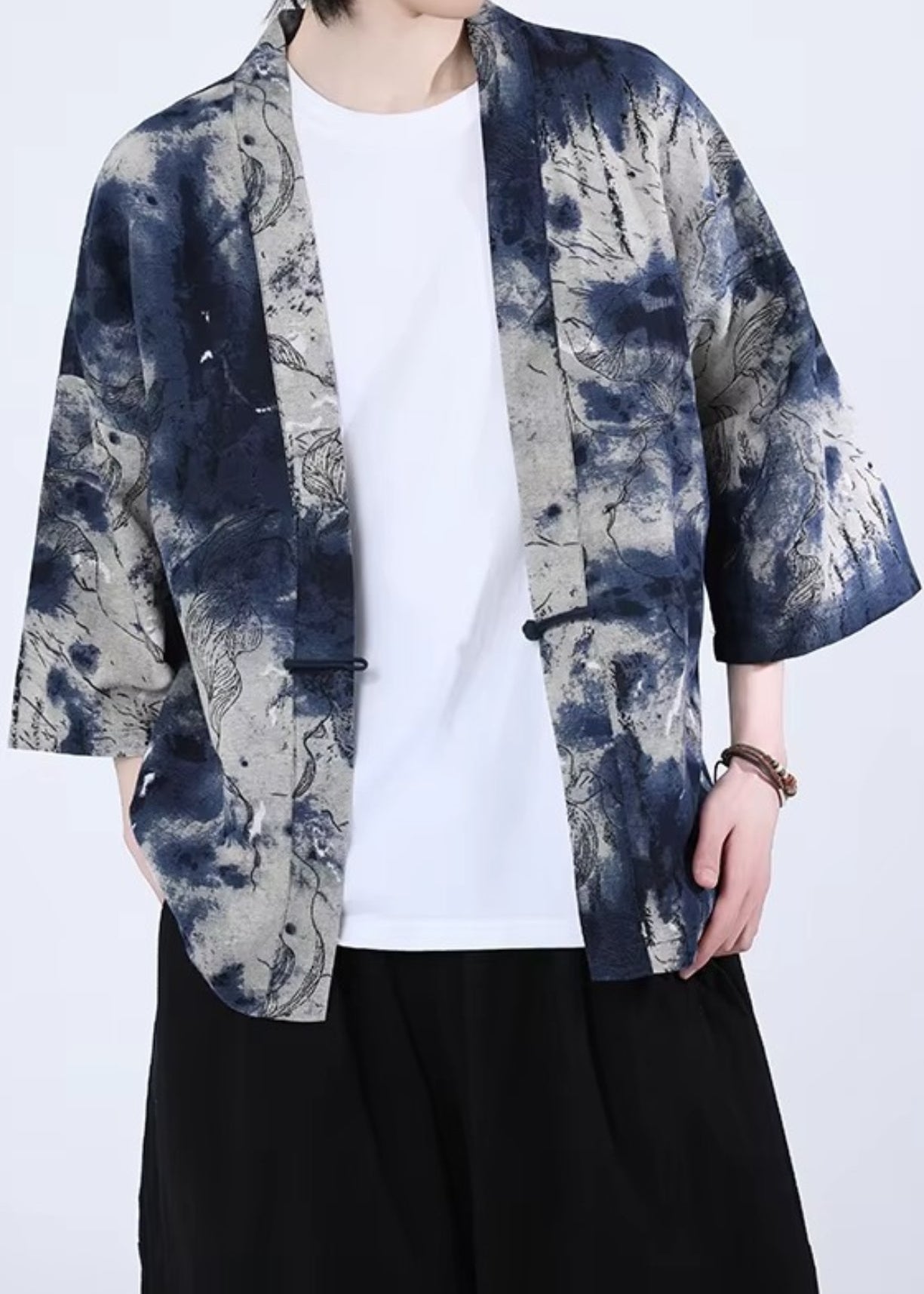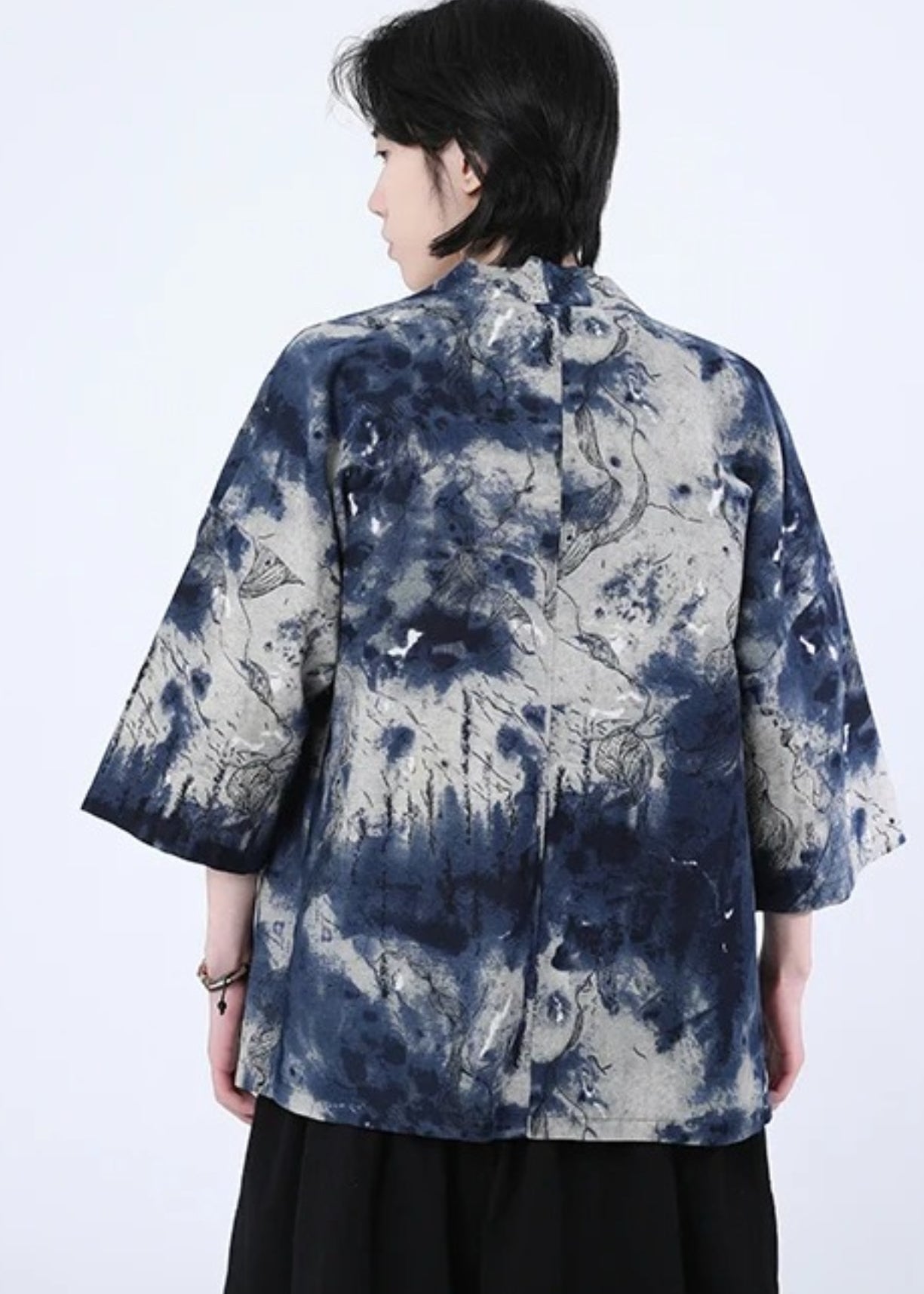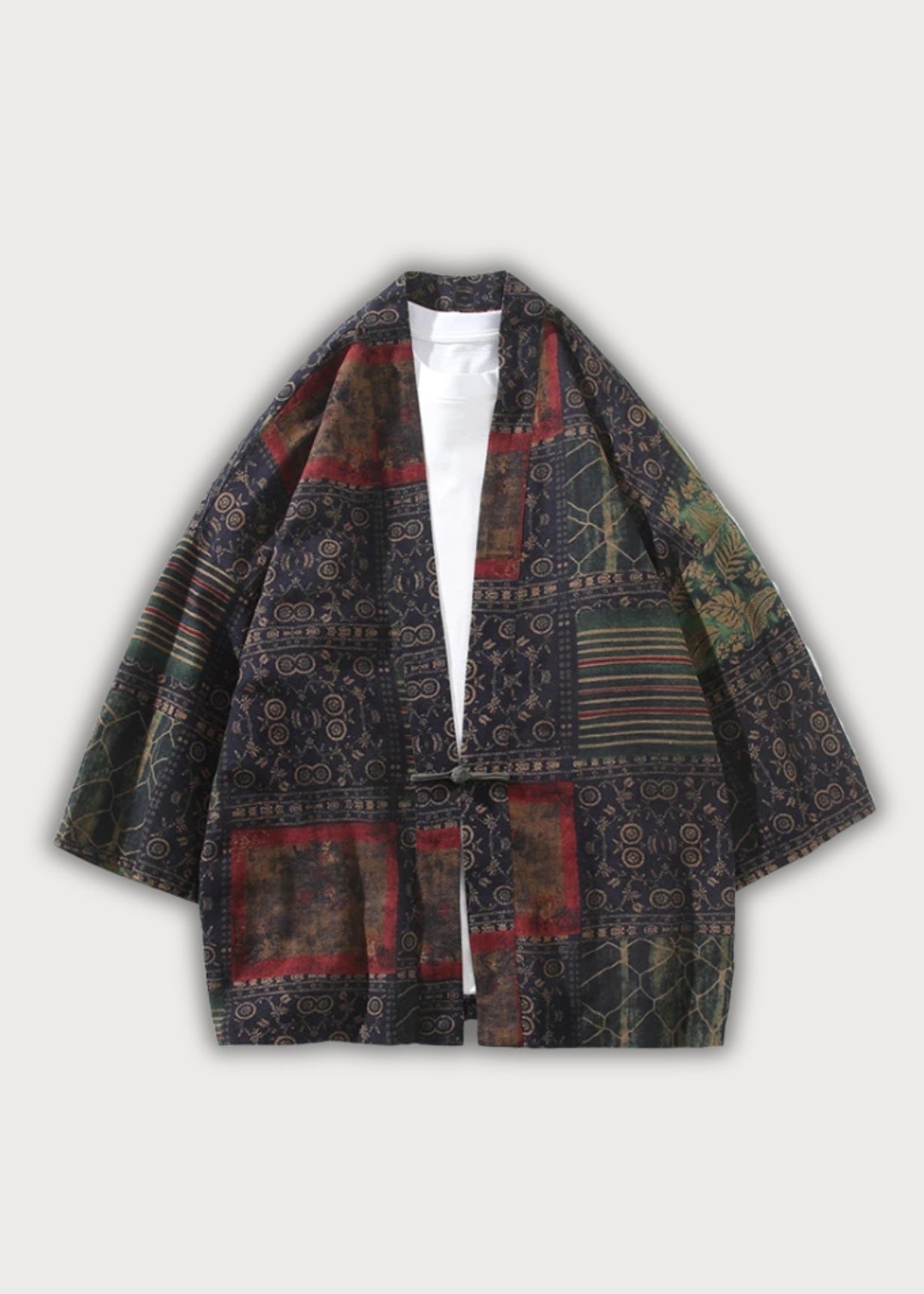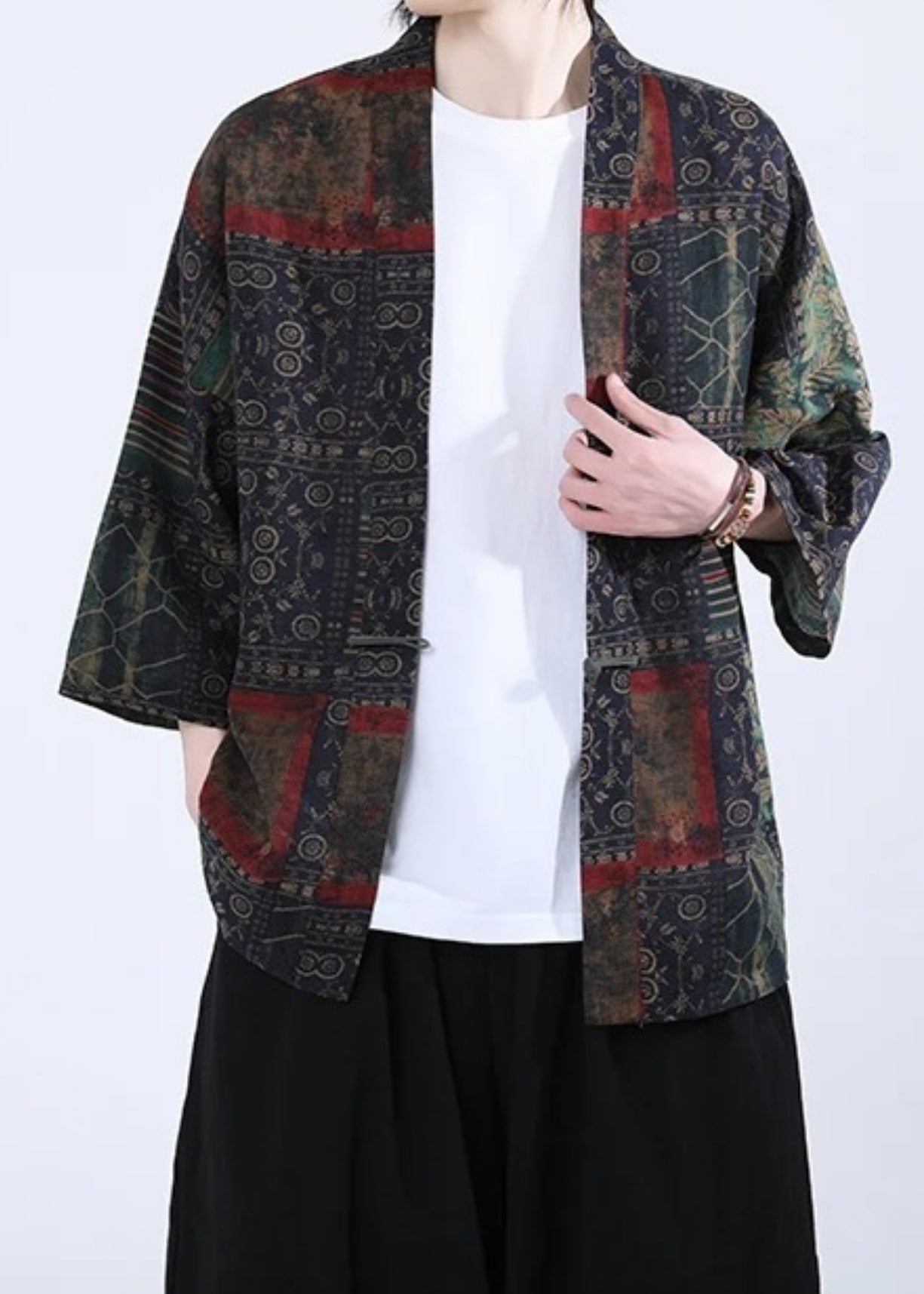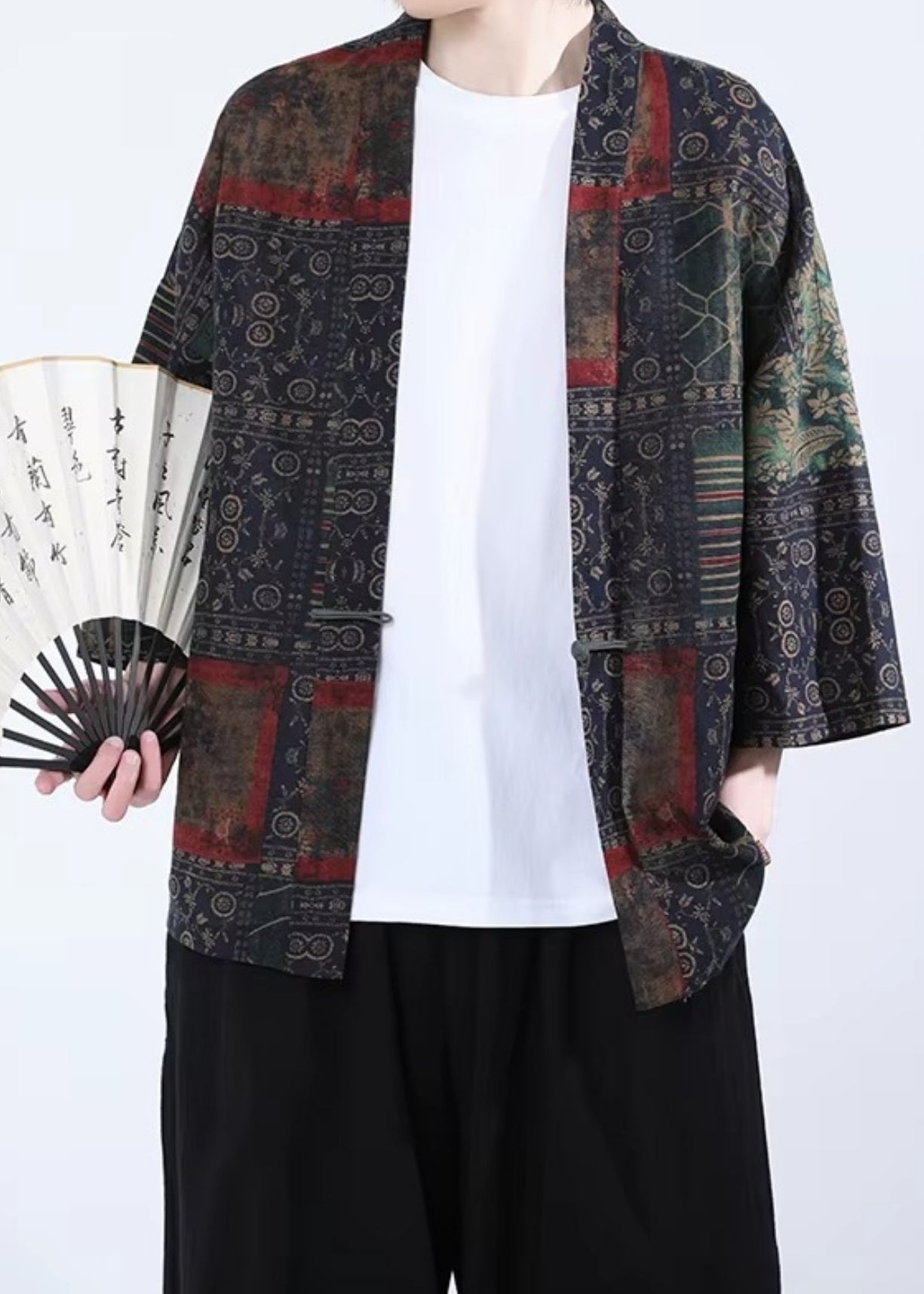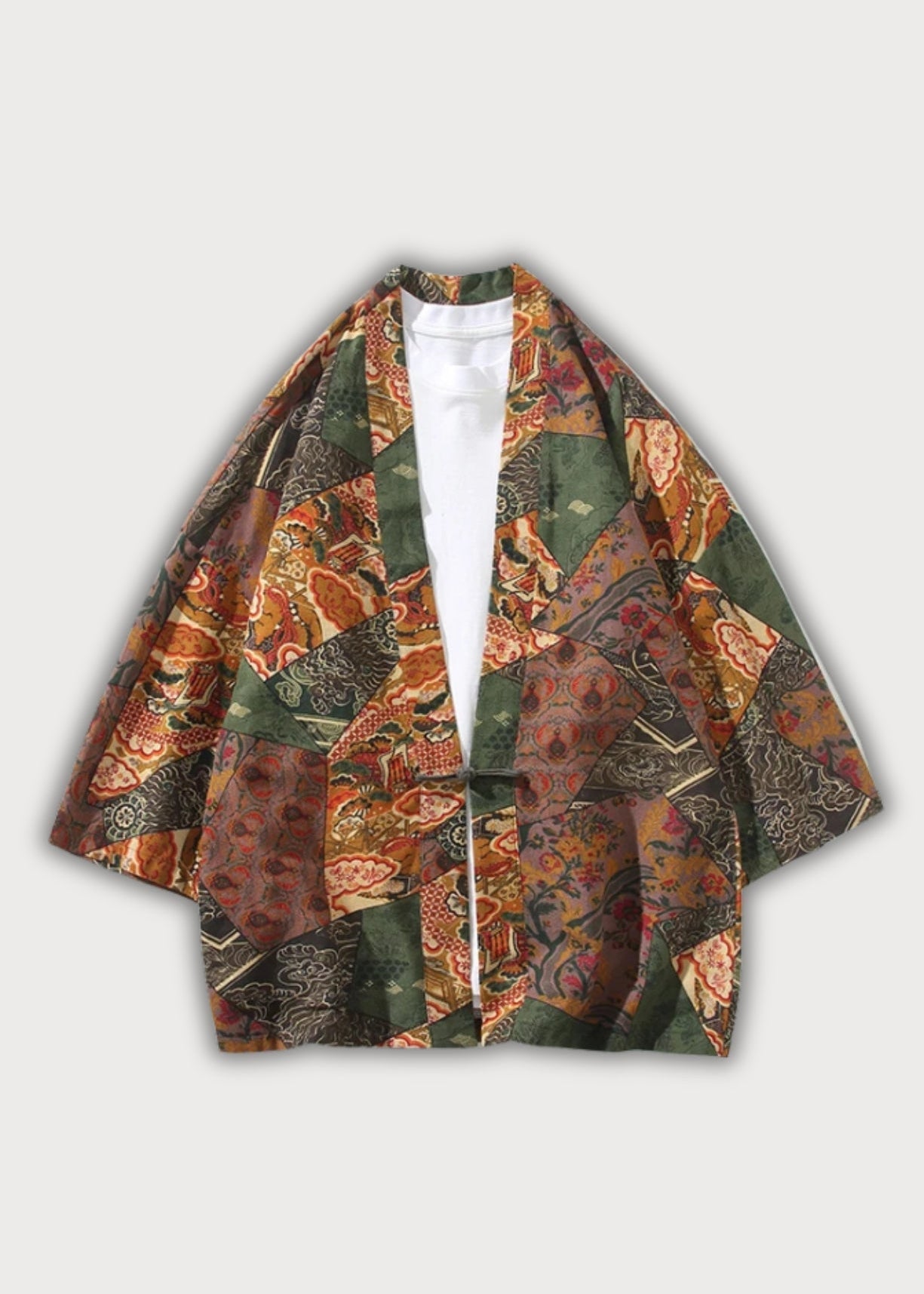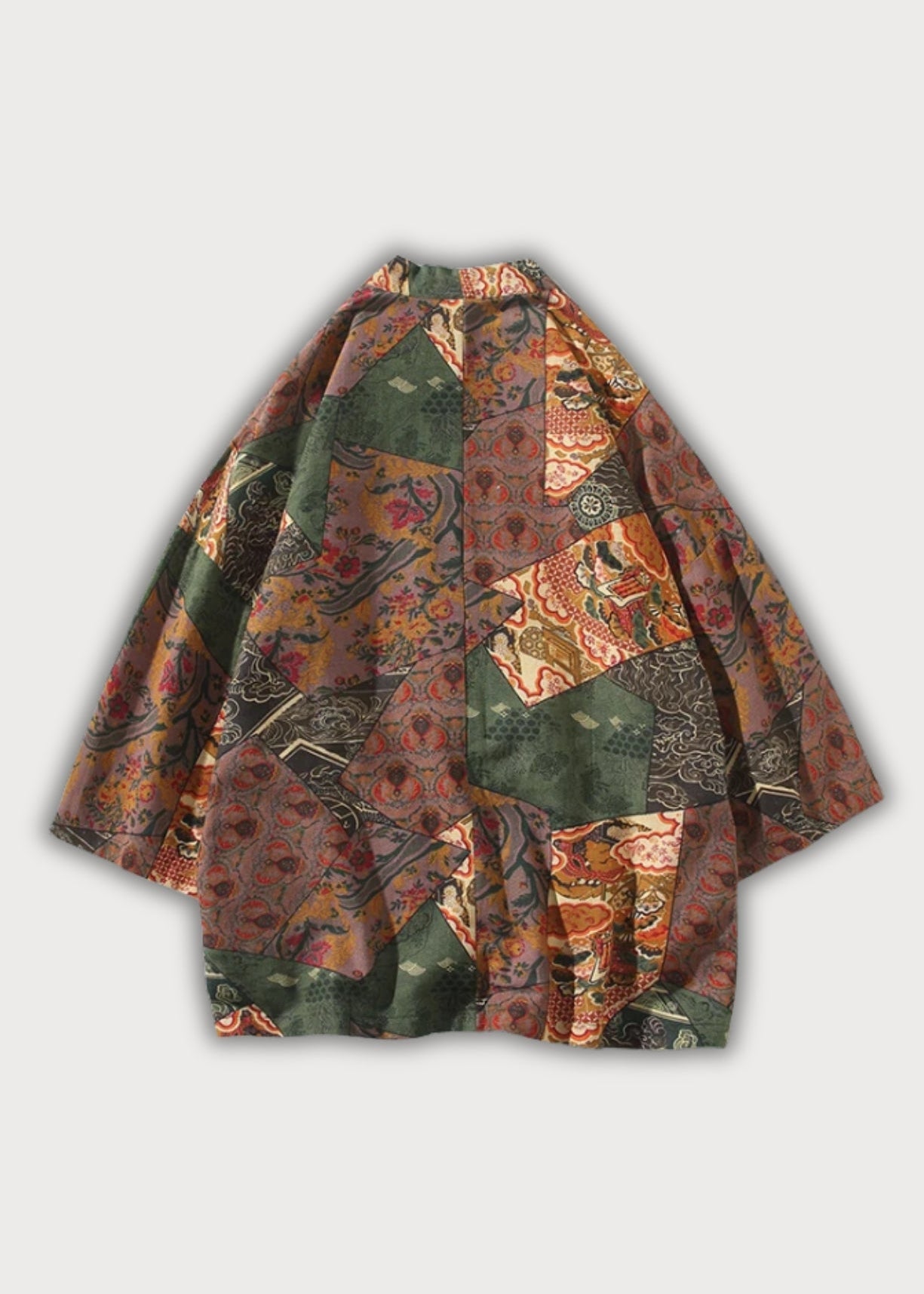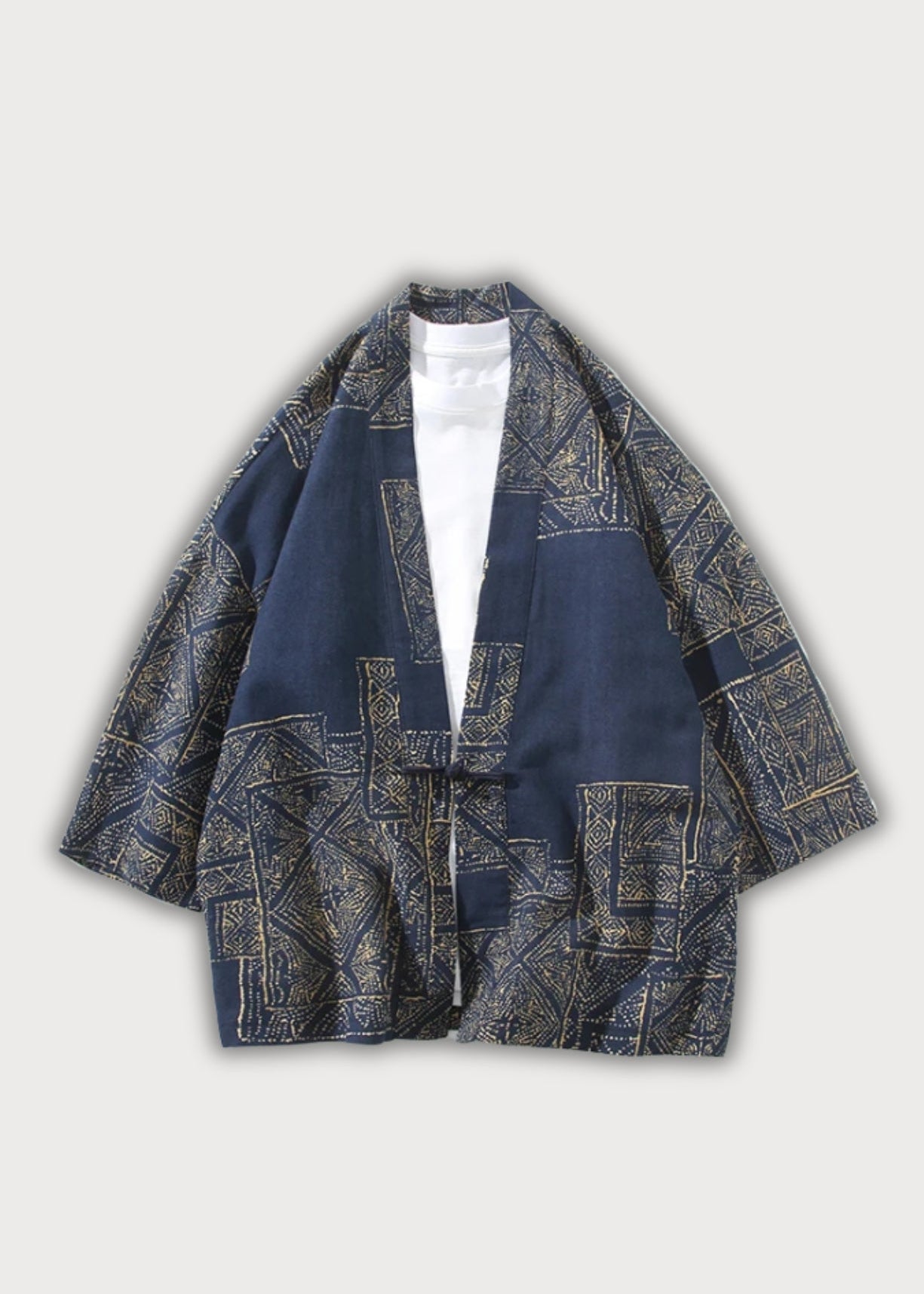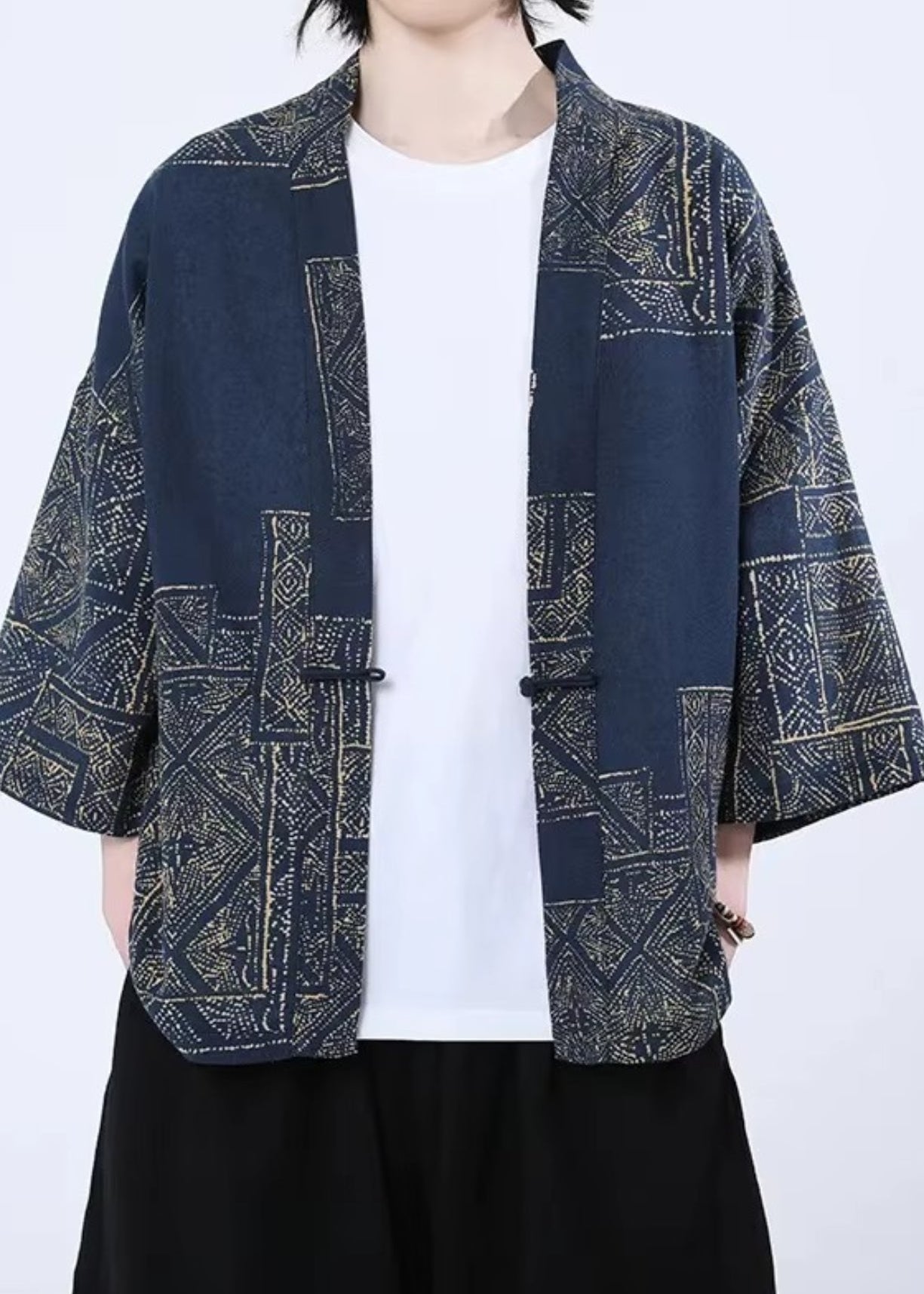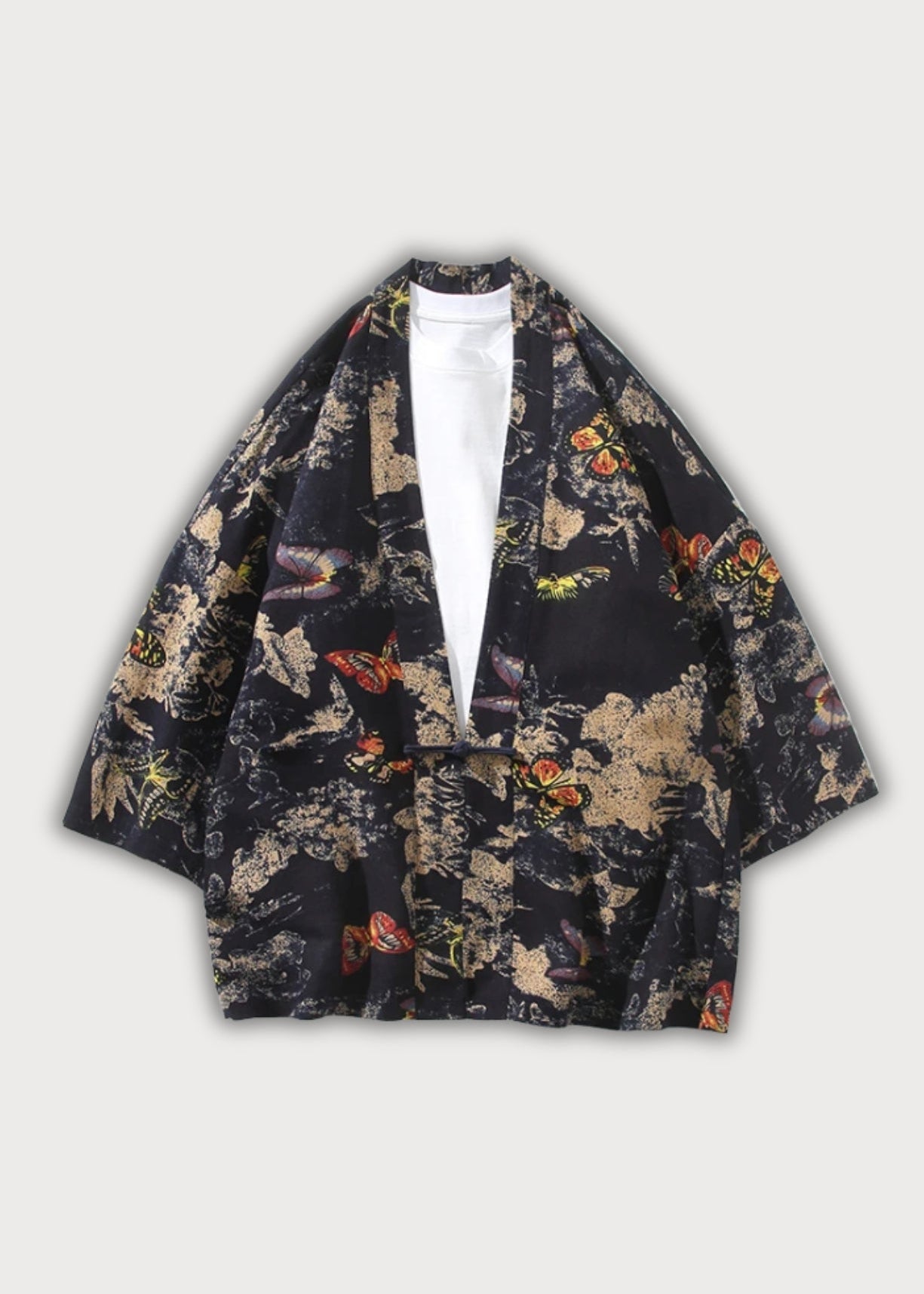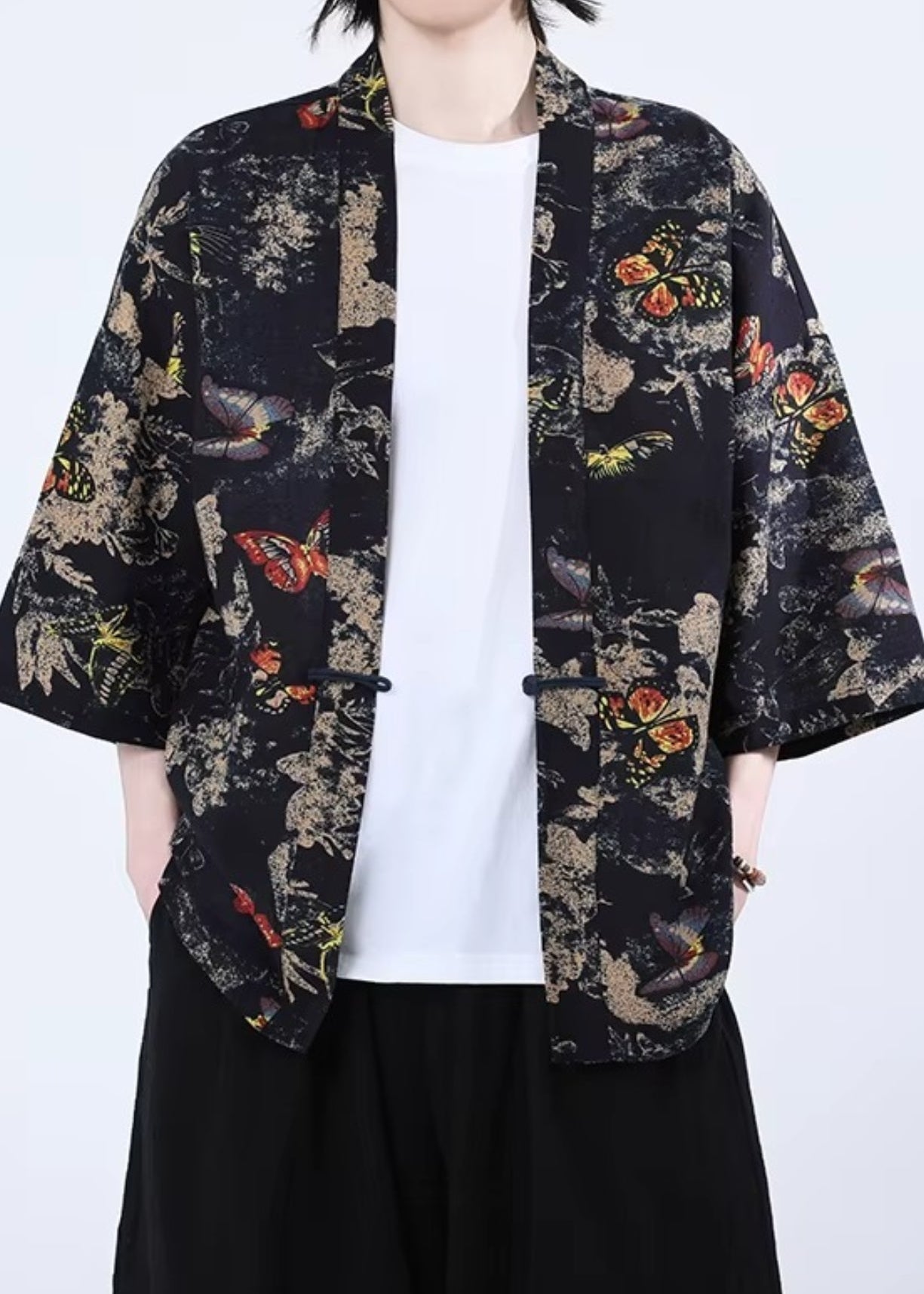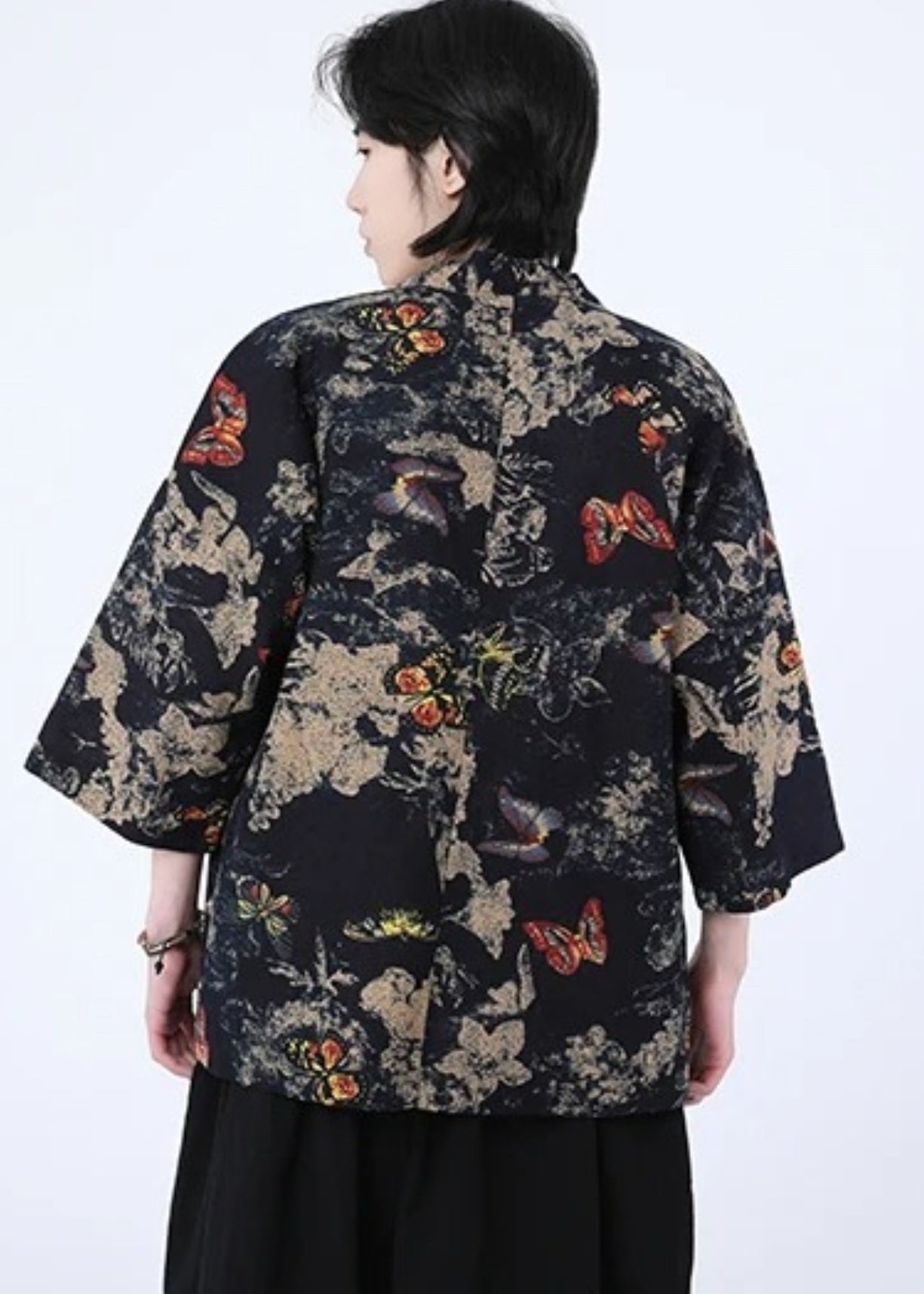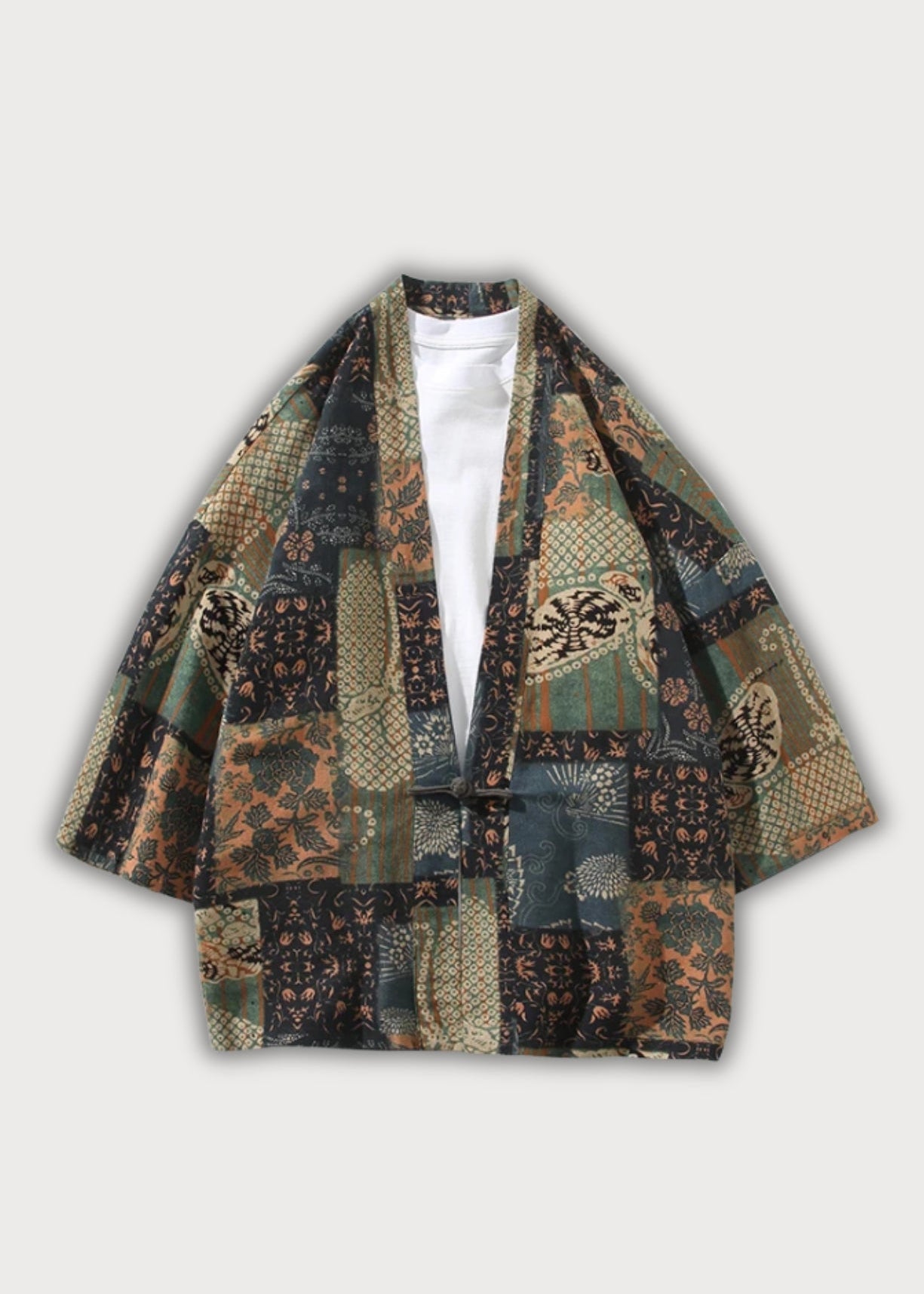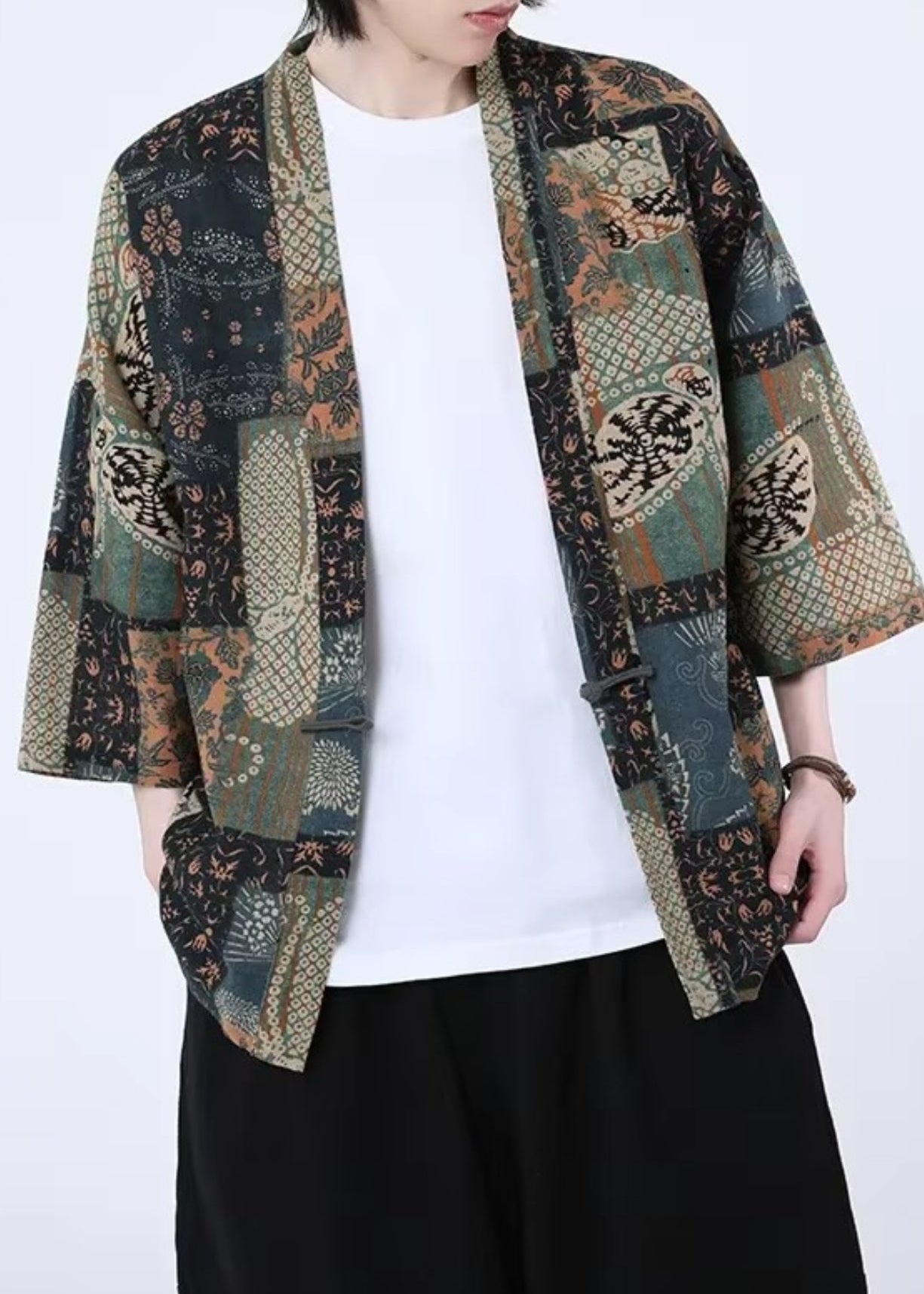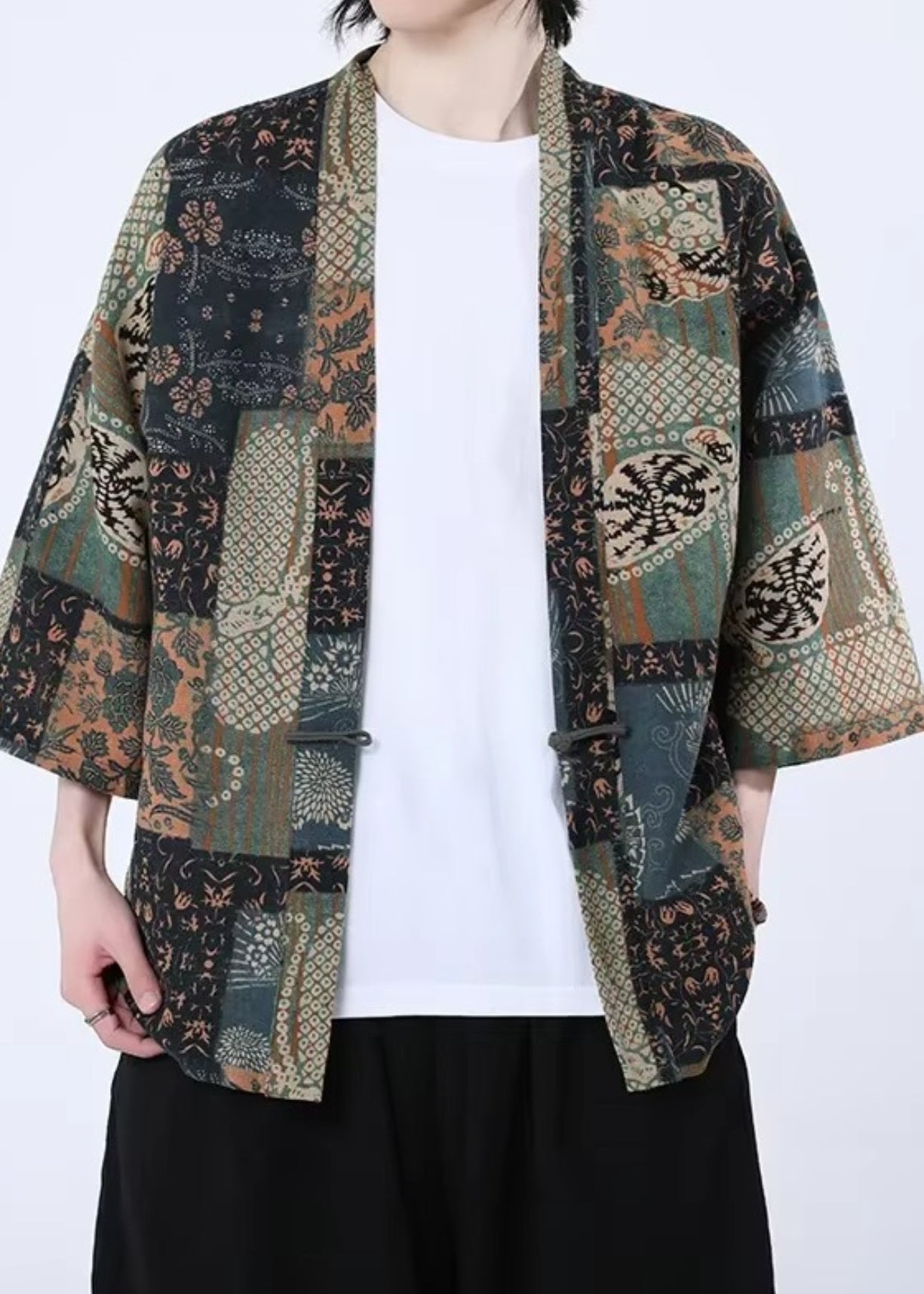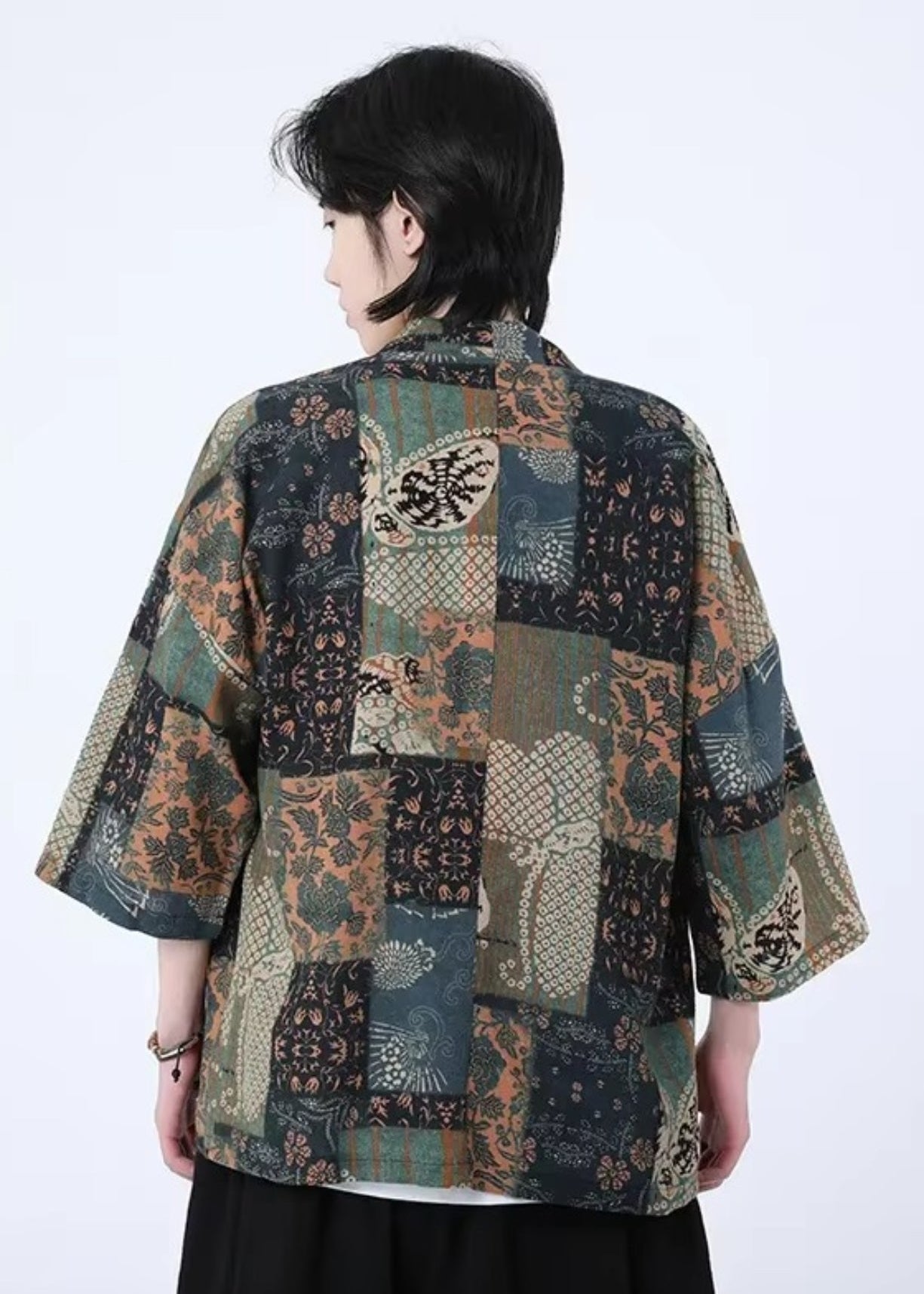-
Explore a collection where each Japanese kimono for men embodies the fusion of ancestral tradition and modern style. Simple cuts, fine materials, and symbolically rich patterns create unique pieces designed for men seeking elegance, authenticity, and distinction.
What is a Japanese kimono for men?
The Japanese kimono for men is much more than a garment: it's a living symbol of Japanese aesthetics and tradition. Recognizable by its straight cut, wide sleeves, and belt around the waist, it was once worn daily before becoming a ceremonial garment. Today, it also appeals to fashion lovers, those passionate about Japanese culture, and those seeking a unique style. Halfway between refinement, comfort, and heritage, the men's kimono embodies a simple and timeless elegance.
Differences between kimono, yukata and jinbei: choosing the right piece
There are several types of traditional Japanese men's clothing, and it's important to differentiate them. The kimono is the most formal version, often made of silk or linen, and is worn for special occasions or ceremonies. The yukata , which is lighter and more casual, is made of cotton and worn in the summer or at spa resorts. The jinbei , a short, loose-fitting ensemble, is often used as indoor or leisure wear. Each has its own function and style, and can find its place in a modern men's wardrobe.
The History of the Men's Kimono in Japan
Worn by nobles, samurai, and later city dwellers, the men's kimono has spanned the centuries, evolving with dynasties and social contexts. During the Edo period, it became a marker of class, with every detail—from the fabric to the pattern—revealing the wearer's rank. Less ornate than women's kimonos, men's kimonos feature understated tones and powerful symbolism: integrity, mastery, and respect. Even today, this rich history can still be seen in the clean lines and textures of traditional and contemporary kimonos , which you can wear with pride.
The kimono for men in Japanese rites and ceremonies
Traditionally, the Japanese kimono for men was worn during major life events: weddings, religious ceremonies, funerals, and official events. Its color, material, and even the knot of the belt (obi) carried specific symbolism. Even today, it retains this role on certain formal occasions in Japan. Wearing it is a sign of cultural continuity, a deep respect for tradition, and a measured elegance.
Symbol and philosophy: what the kimono says about you
Beyond the sartorial aspect, the kimono is a reflection of Japanese thought. Its wearing calls for slowness, precision of gesture, harmony between the individual and his environment. Wearing a traditional men's kimono is to express a certain relationship with the world: sober, centered, respectful. This garment then becomes an extension of oneself, a way of embodying strong values without needing to proclaim them. It imposes presence without ever forcing the gaze.
Men's Yukata: the lightweight version of the traditional kimono
Less formal but just as iconic, the men's yukata is appealing for its lightness and simplicity. Made of cotton, often unlined, it is worn at summer festivals, in ryokan (traditional inns), or simply at home. Easy to put on and breathable, it is perfect for relaxing and relaxing moments. For those who want to discover kimono without too much formality, the yukata represents an ideal gateway to the world of Japanese clothing.
Kimono and martial arts: between spirituality and discipline
In martial arts such as aikido, judo, or kendo, the kimono—here called keikogi or dogi—is much more than a uniform: it is a tool for concentration, a constant reminder of respect and rigor. Inspired by the traditional Japanese kimono , it embodies the discipline of body and mind. For many practitioners, the loose fit and gestures associated with the garment are inseparable from martial ethics. By wearing a kimono on a daily basis, we adopt a posture inspired by this philosophy: calm, control, and presence.
Create a complete Japanese outfit: kimono, obi, geta, etc.
A harmonious Japanese men's outfit doesn't stop at the kimono. It's often accompanied by a discreet obi belt , wooden geta sandals, and sometimes a haori (a short jacket worn over it). Each element subtly complements the silhouette and contributes to an overall elegance. For a contemporary version, you can modernize the ensemble with understated pants, minimalist sneakers, and a thin belt . This way, you retain the essence of traditional clothing while integrating it into your personal style.
What material should you choose for your Japanese men's clothing?
The choice of material influences the comfort, drape, and finish of the kimono. In cotton , the kimono is breathable, ideal for summer or indoor wear. In linen , it has a natural, slightly irregular texture, highly appreciated for its raw elegance. In silk , it becomes a luxury piece, fluid and light, perfect for formal occasions. By choosing the material suited to your use and your body shape, you guarantee optimal comfort and a neat look in all circumstances.
Short or long Japanese kimono: which cut for which look?
The length of a men's Japanese kimono directly influences its style. A long kimono evokes solemnity and presence, and is better suited to formal occasions or a more theatrical look. A short kimono, on the other hand, offers a more dynamic and urban silhouette. It is easier to wear on a daily basis, like a light jacket or a stylish coat. Choosing between the two will depend on the desired effect: traditional elegance or bold modernity.
Create a Cohesive Japanese Look with a Traditional Kimono
Wearing a kimono doesn't necessarily mean opting for a traditional total look. The challenge is to create balance. Pair your kimono with understated pieces : straight-leg pants, a plain top, and understated shoes . Take inspiration from contemporary Japanese fashion, which often subtly blends tradition and modernity. The key is to pay attention to the fluidity of shapes, the quality of materials, and the consistency of volumes. A successful Japanese men's look is always measured and stylish.
Incorporating a Japanese kimono into your everyday style
Contrary to popular belief, the kimono can perfectly integrate into a modern wardrobe. Worn as an overshirt, a lightweight coat, or a statement piece in a minimalist outfit, it adds a touch of originality without being over the top. For casual days, pair it with raw-cut jeans or wide-leg pants. For evening wear, choose a dark, structured style. Japanese clothing then becomes a vector of elegance, uniqueness, and everyday comfort.
Kimono & streetwear: a meeting between tradition and modernity
Streetwear style has found a unique outlet in the kimono. Many Japanese and Western brands have drawn inspiration from it to create modern men's kimono jackets : oversized cuts, technical materials, graphic prints... This fusion gives rise to bold pieces, where the ancestral culture of Japanese clothing dialogues with the energy of the street. If you like bold silhouettes, the streetwear kimono will allow you to stand out with originality while honoring its heritage.
Our iconic models: simplicity, patterns and embroidery
Among our most iconic pieces, three models particularly capture attention with their assertive style and modern cut. The Akatsuki Japanese Kimono , with its dynamic print and urban spirit, is ideal for those who want to assert a contemporary silhouette without denying Japanese heritage. The Asaumi Kimono , in lighter tones and delicate patterns, plays the card of summer subtlety. As for the Shiratori Kimono , it seduces with its embroidered patterns inspired by the dragon, and its short cut which makes it a perfect city kimono. These three pieces embody the point of balance between modernity, comfort and Japanese culture.
Samurai-inspired kimono: nobility and presence
Some Japanese kimono styles draw their inspiration directly from the outfits once worn by samurai. Their more rigid cut, deep colors (black, indigo, khaki), and robust fabrics recall the warrior and disciplined spirit of these iconic figures. Wearing this type of kimono is to imbue yourself with a state of mind centered on honor, rectitude, and quiet elegance. Ideal for those who wish to assert a strong silhouette without resorting to visual excess.
Typical patterns of Japanese men's kimono: crane, wave, dragon...
The patterns of a Japanese kimono for men are never chosen at random. They tell a story, convey a state of mind, or carry a wish. The crane , for example, symbolizes longevity and nobility; the dragon evokes inner strength and self-control; waves or clouds illustrate impermanence and harmony with nature. These graphic representations give each piece an almost spiritual depth. By choosing a kimono adorned with a pattern that speaks to you, you are wearing much more than a garment: you are embodying a symbol.
Why give a Japanese kimono?
Giving a Japanese kimono to a man is choosing a unique gift, full of meaning and style. Whether for a birthday, a celebration, or simply to show your thoughtfulness, this garment expresses much more than taste in clothing. It invites discovery, reflection, and a new way of dressing with intention. It is an elegant, original, and often memorable gesture that conveys values of respect, serenity, and distinction. A gift as lasting as a precious memory.
Also visit the full collection of men's kimonos for more choices.
